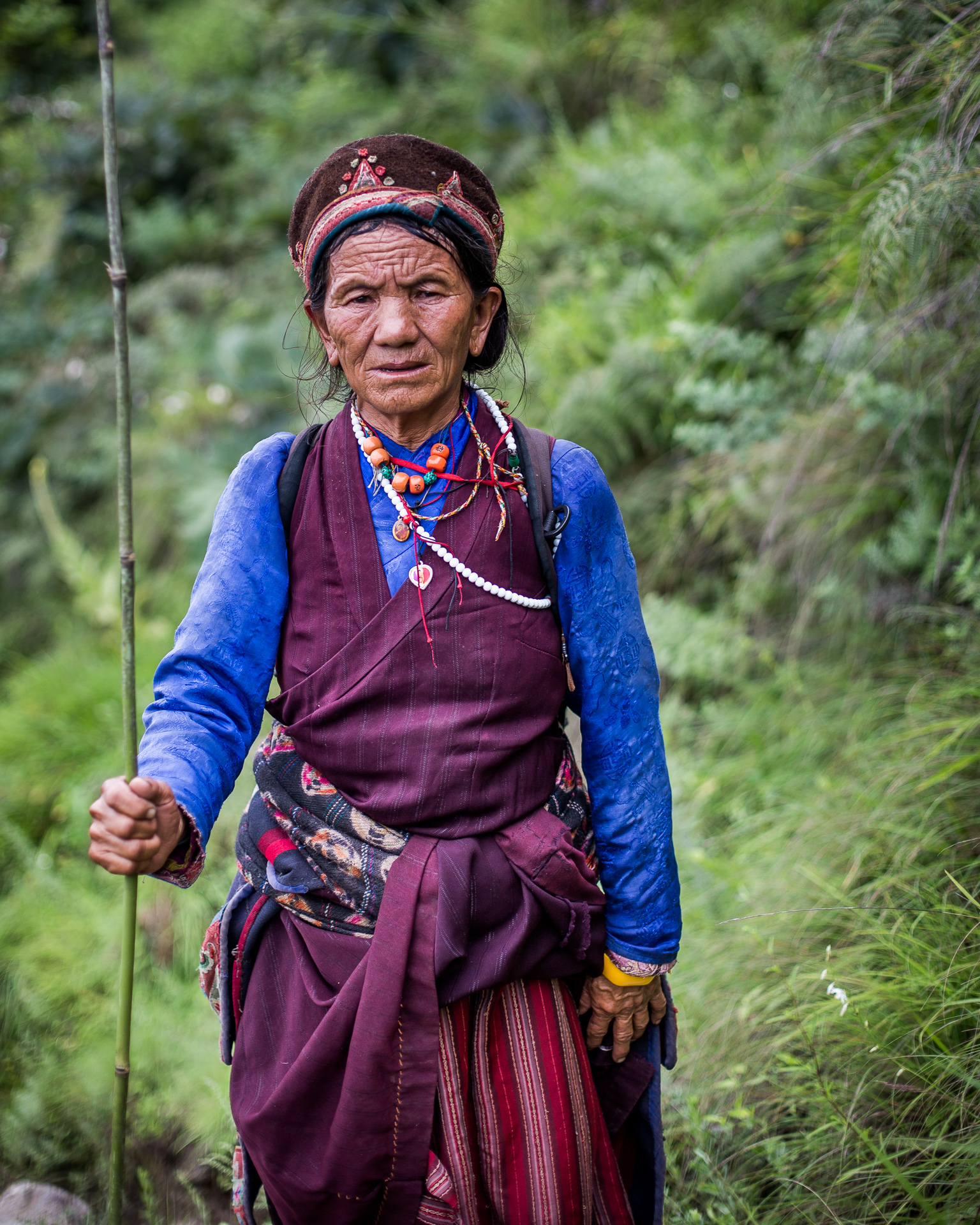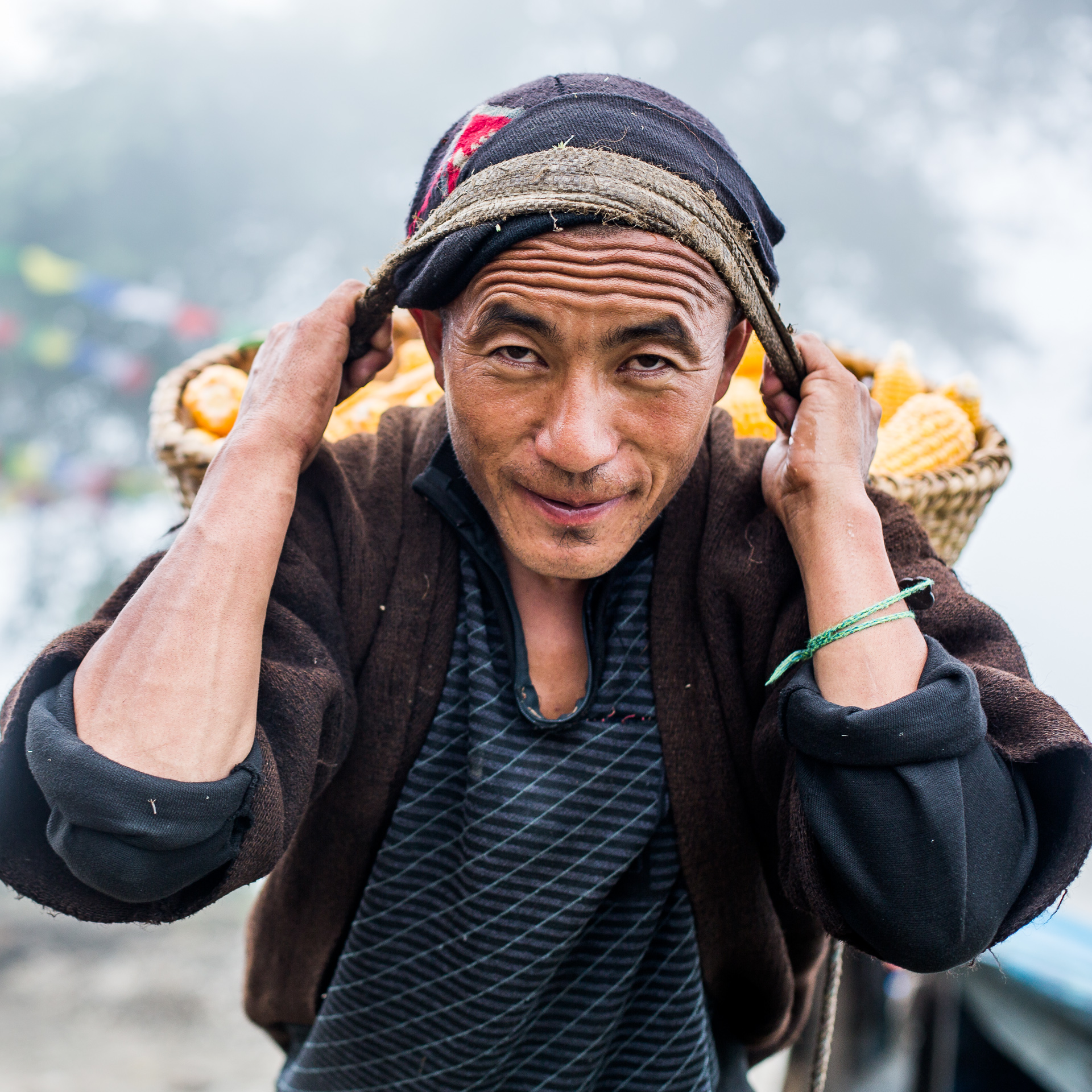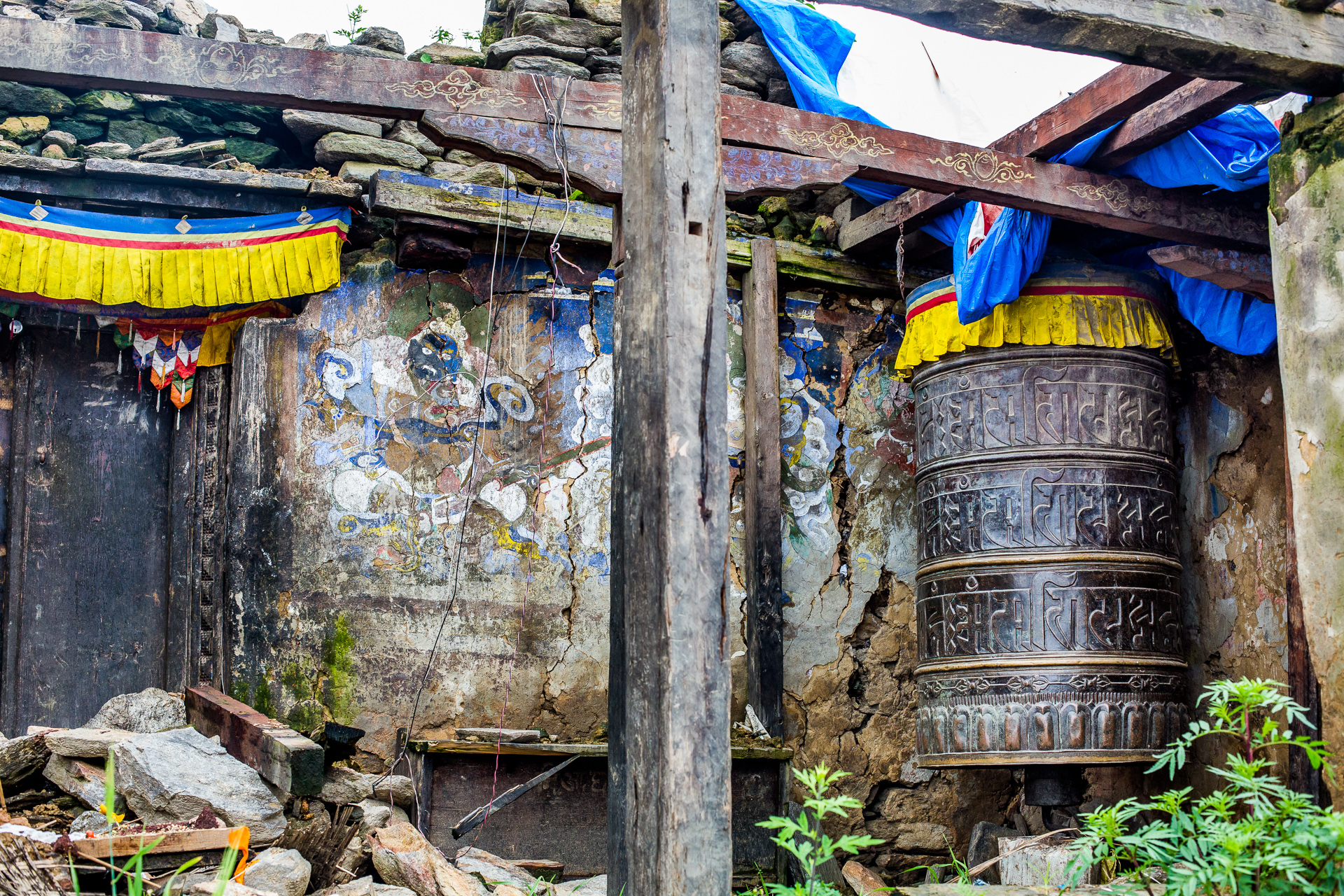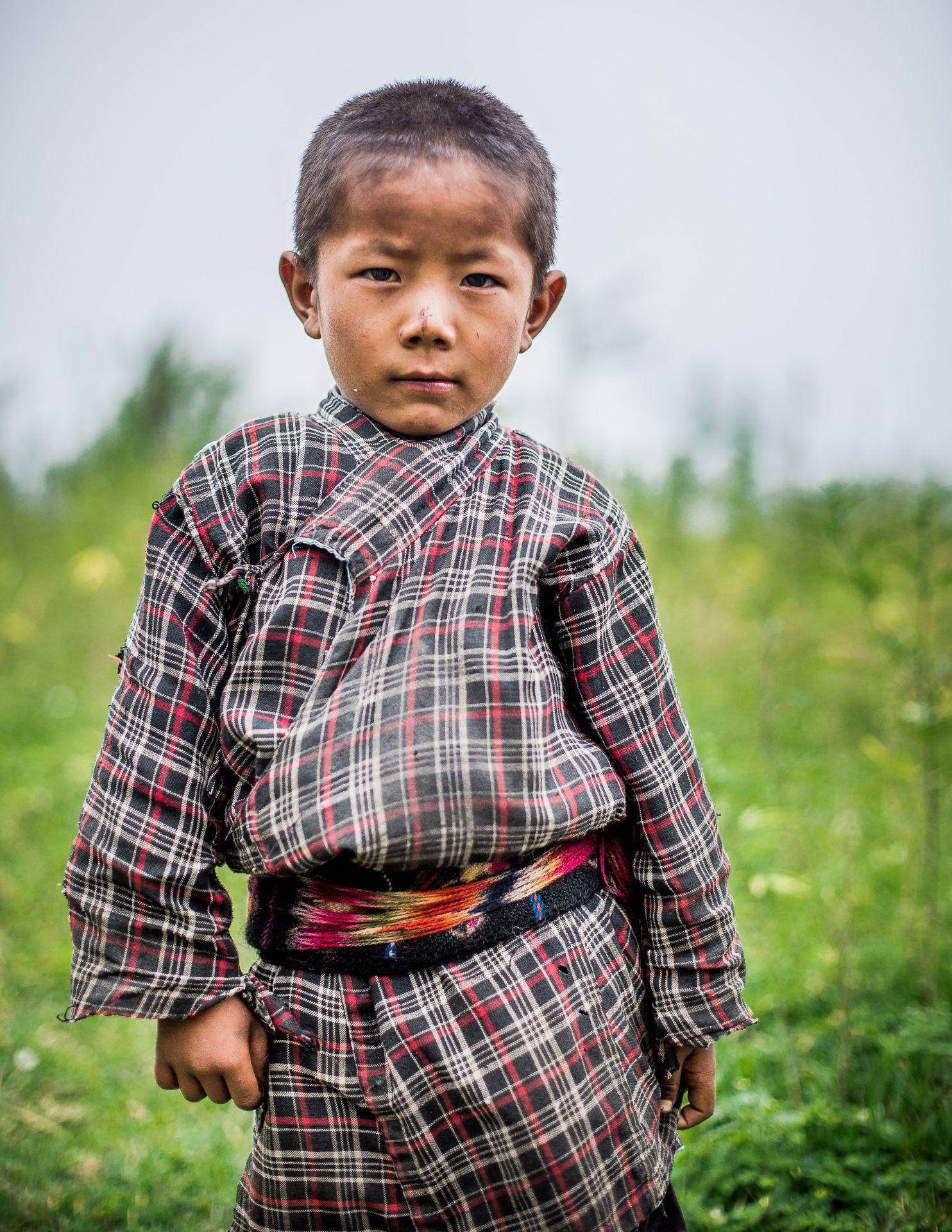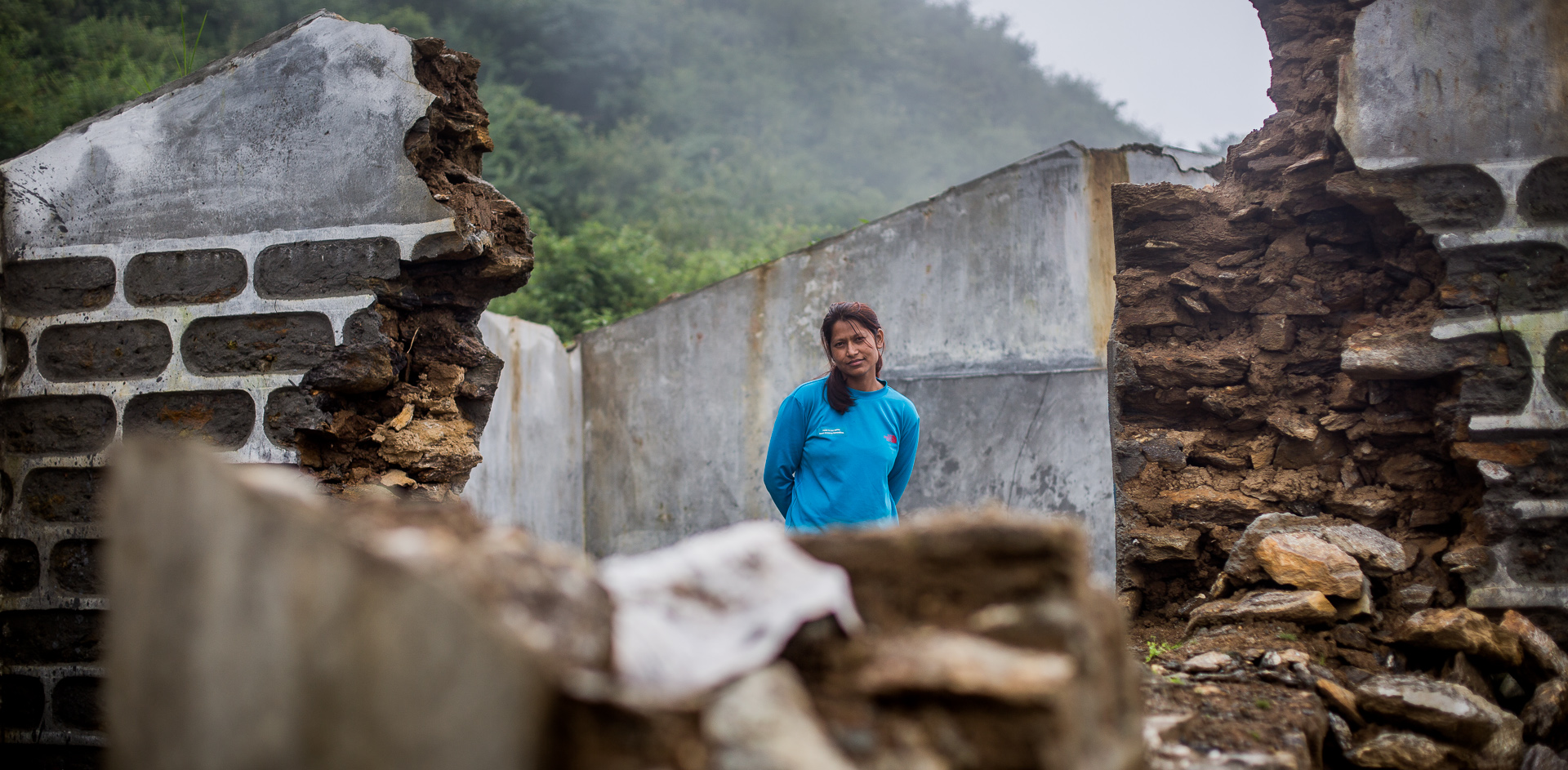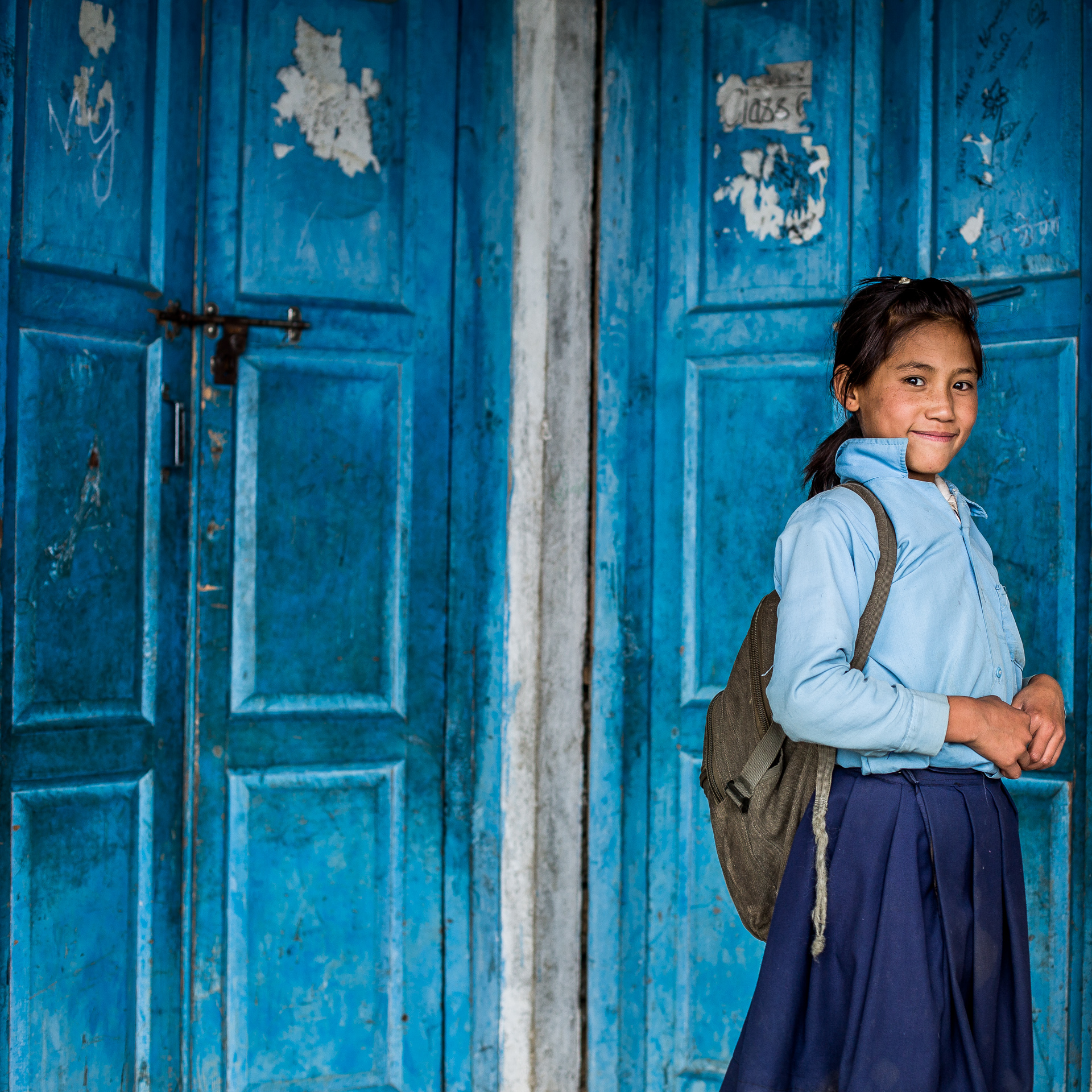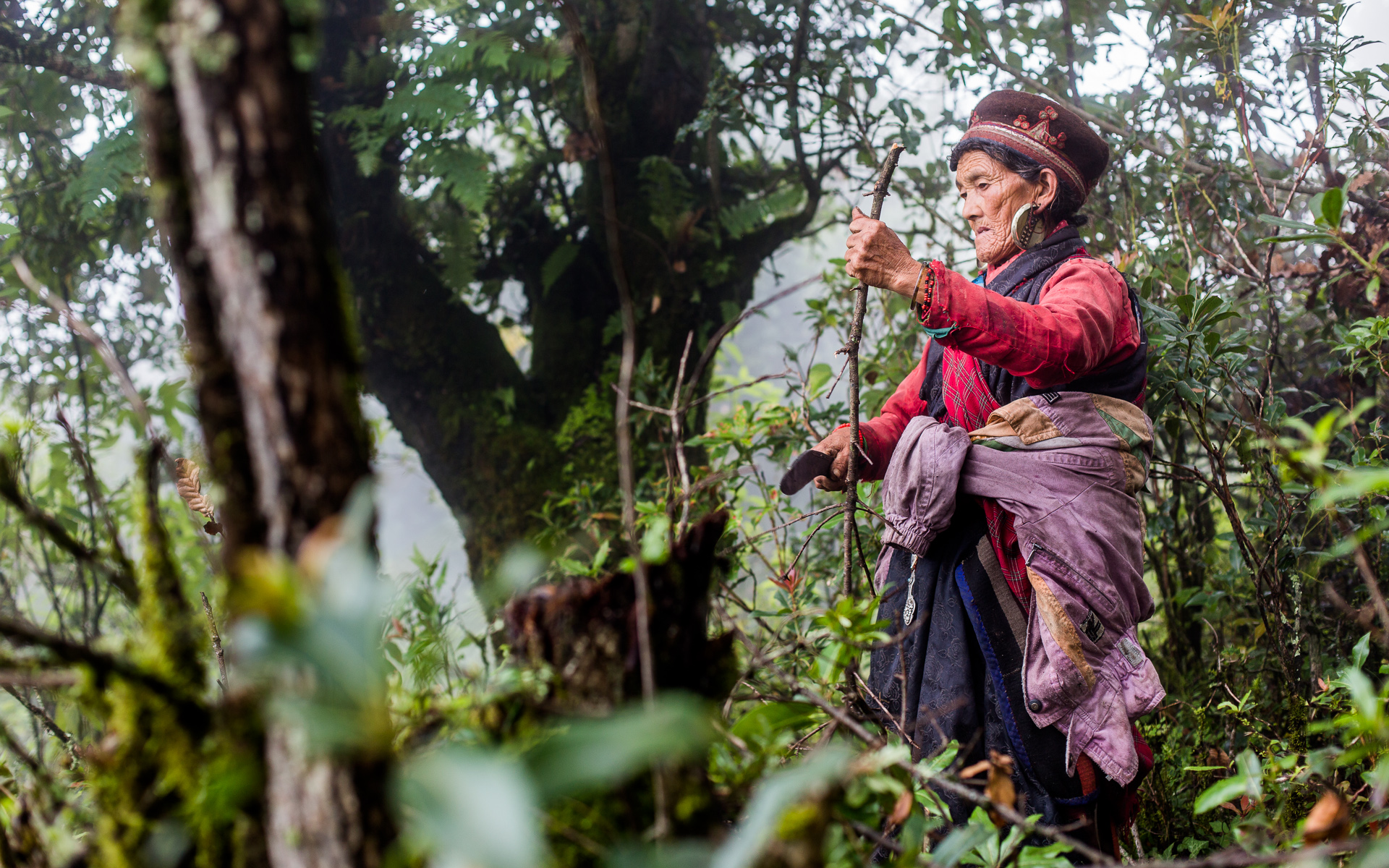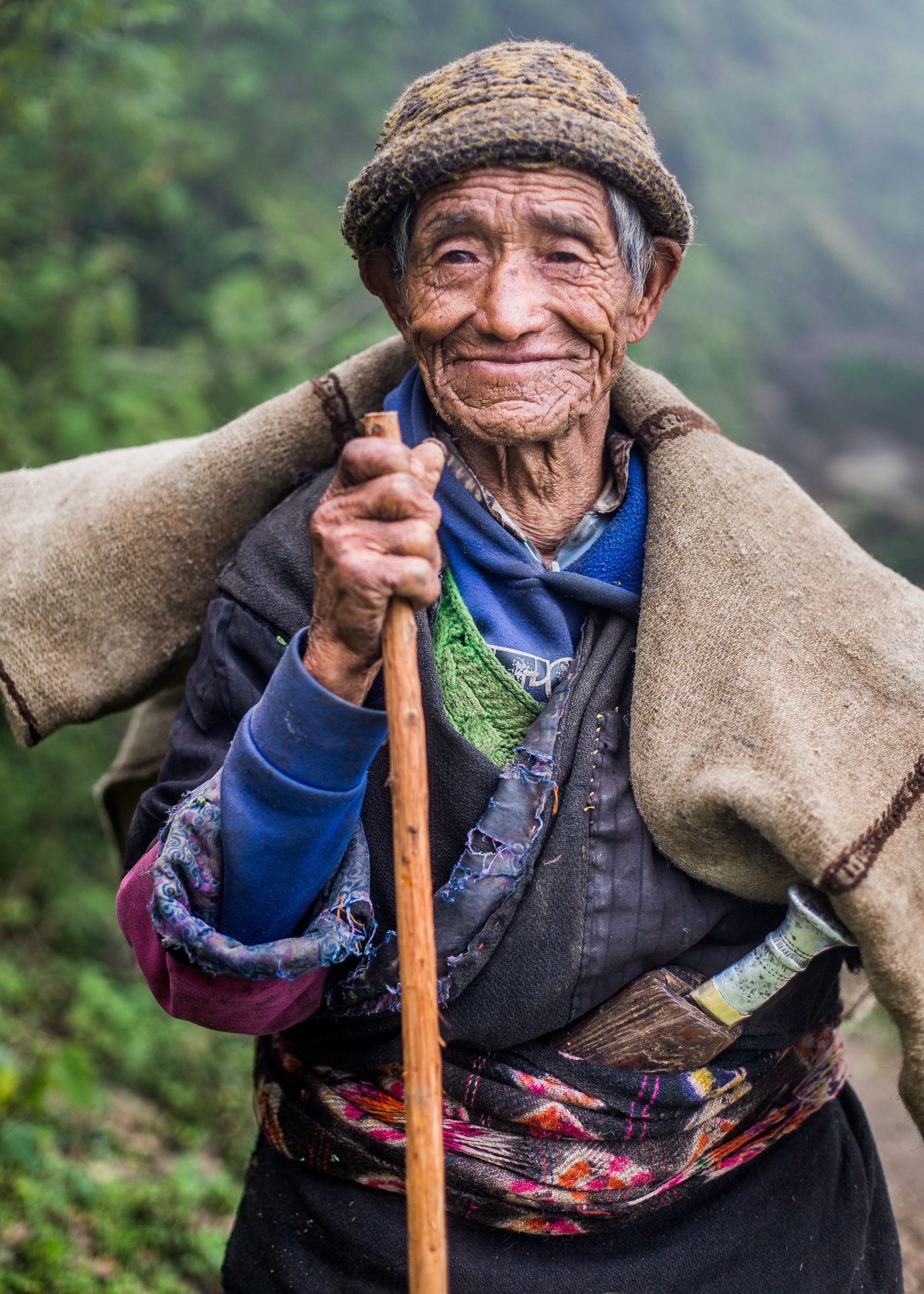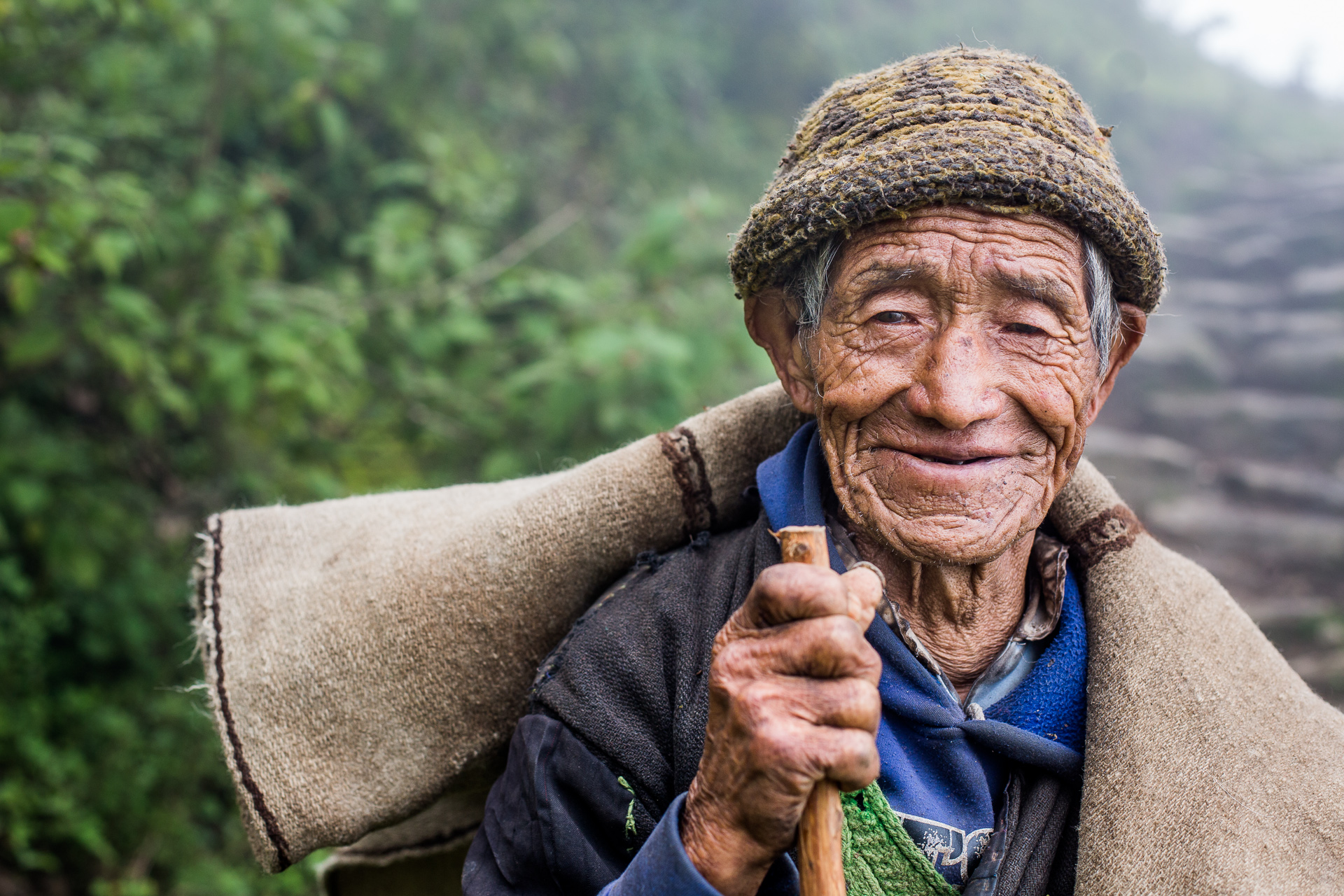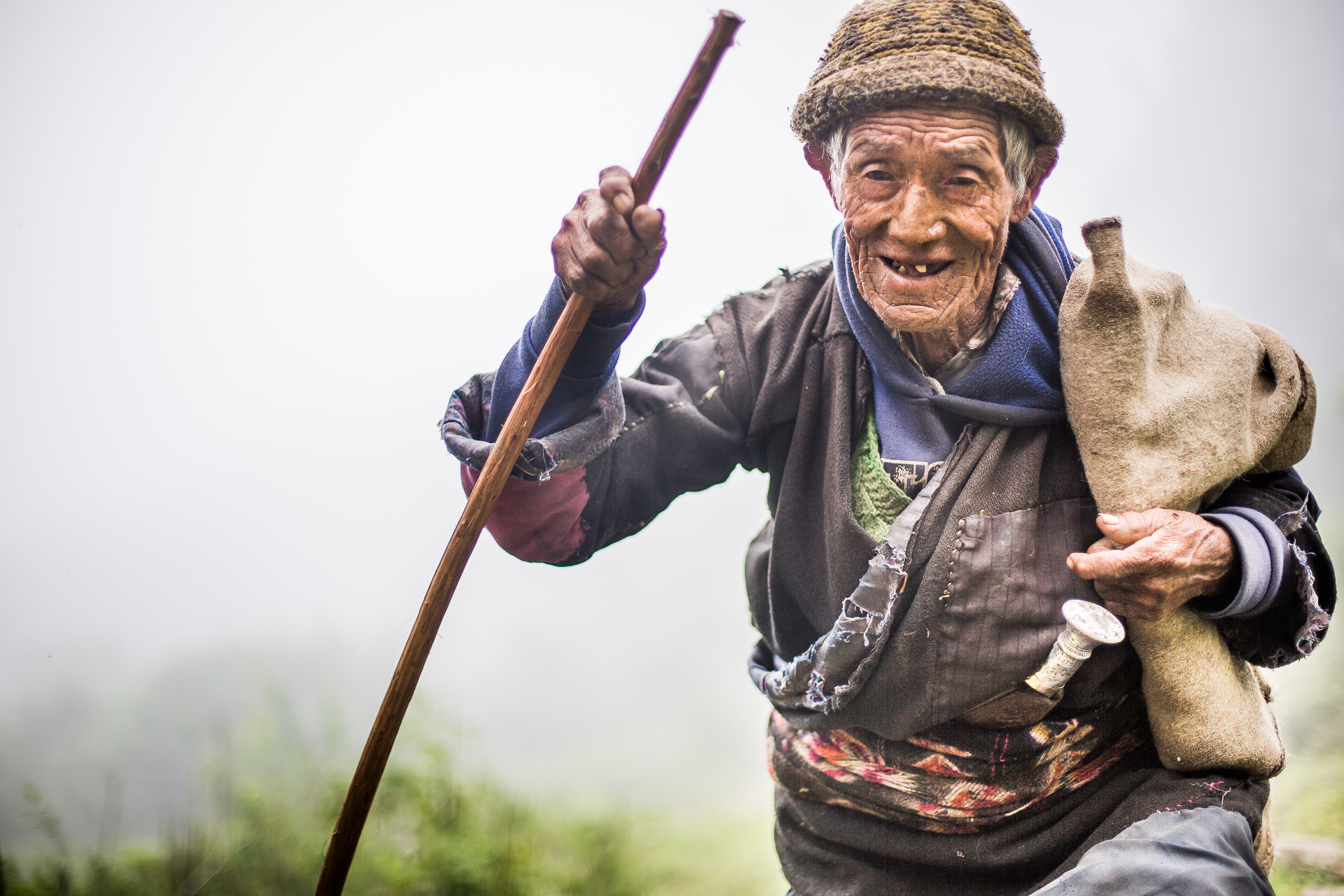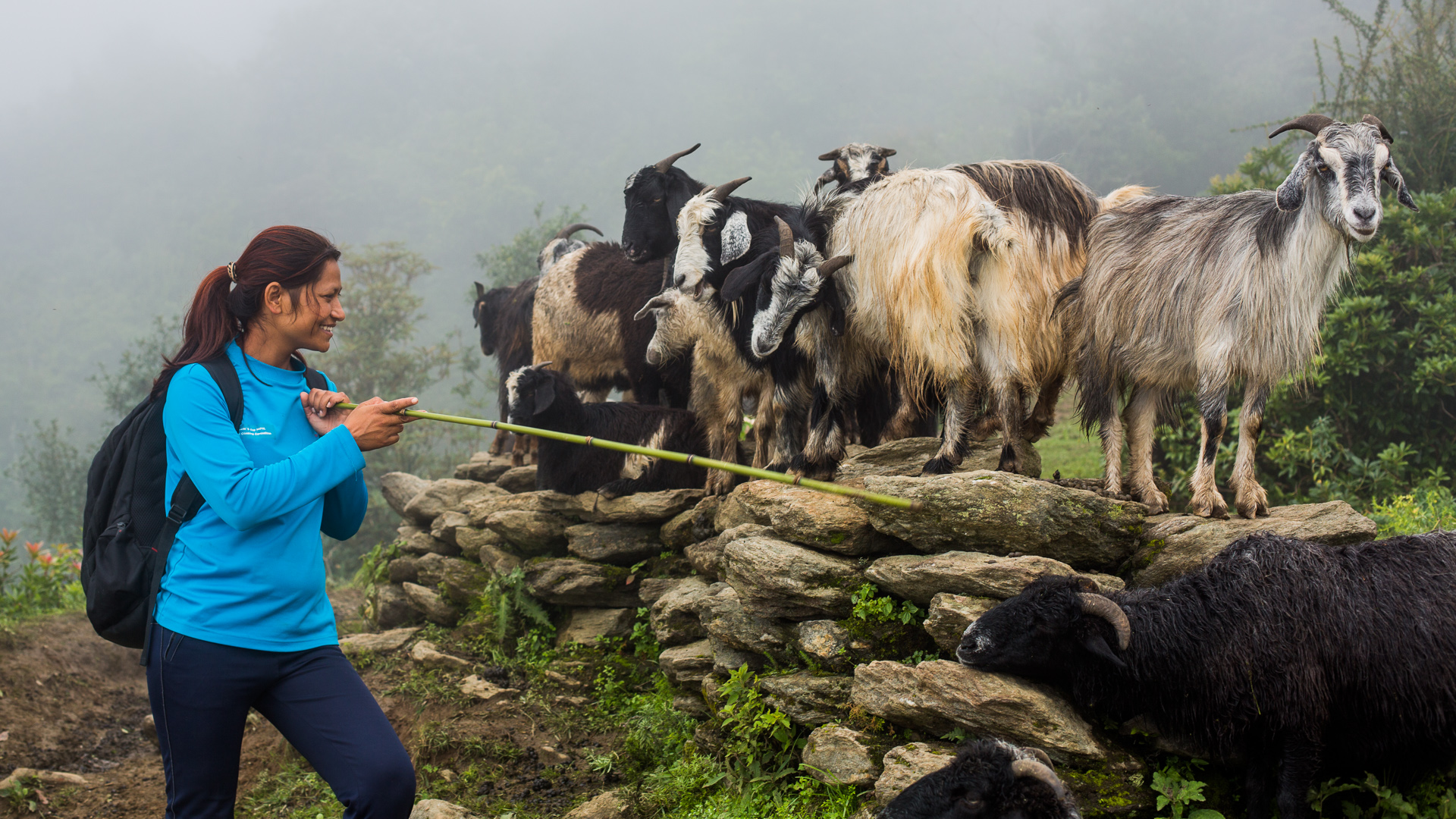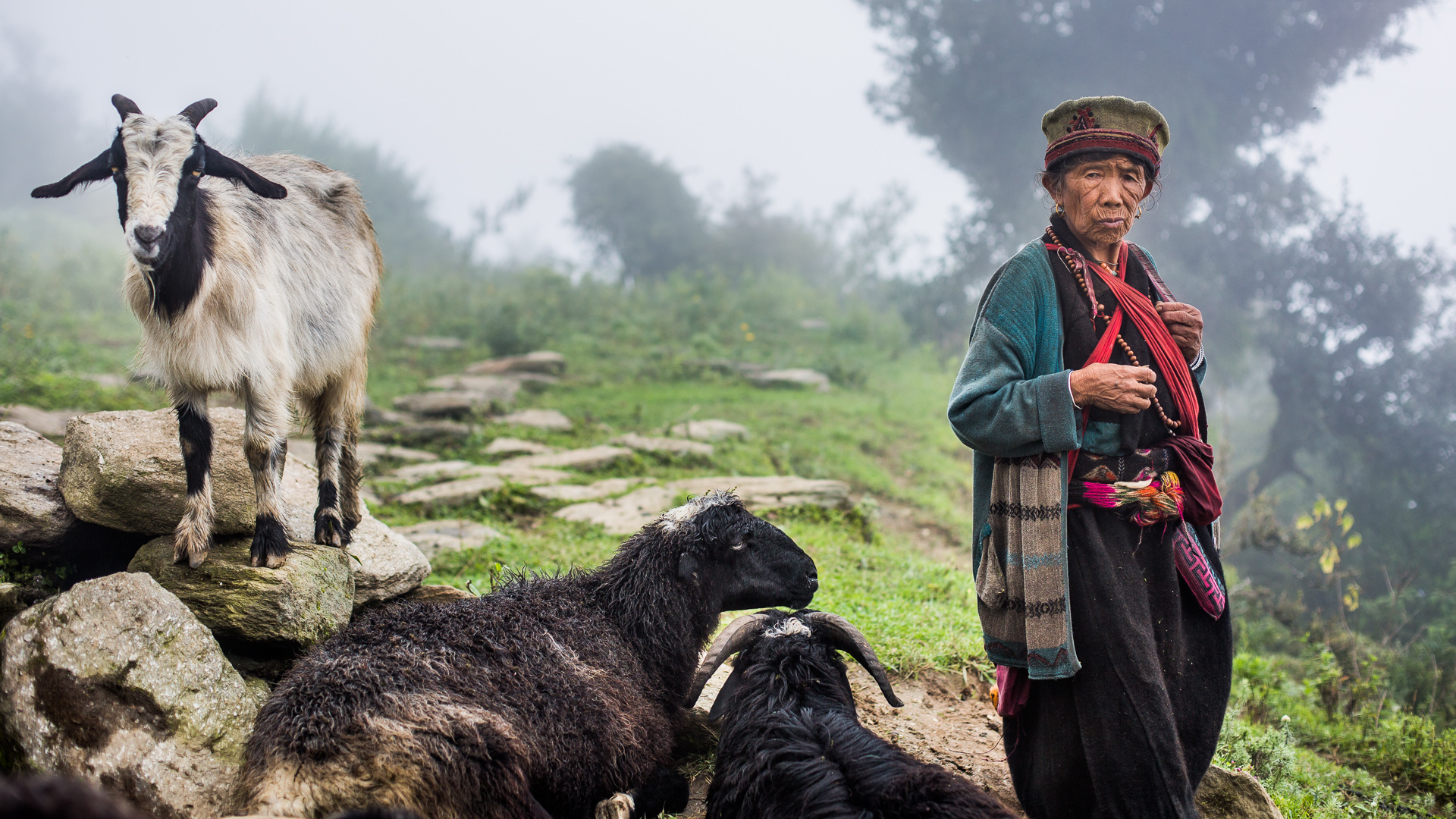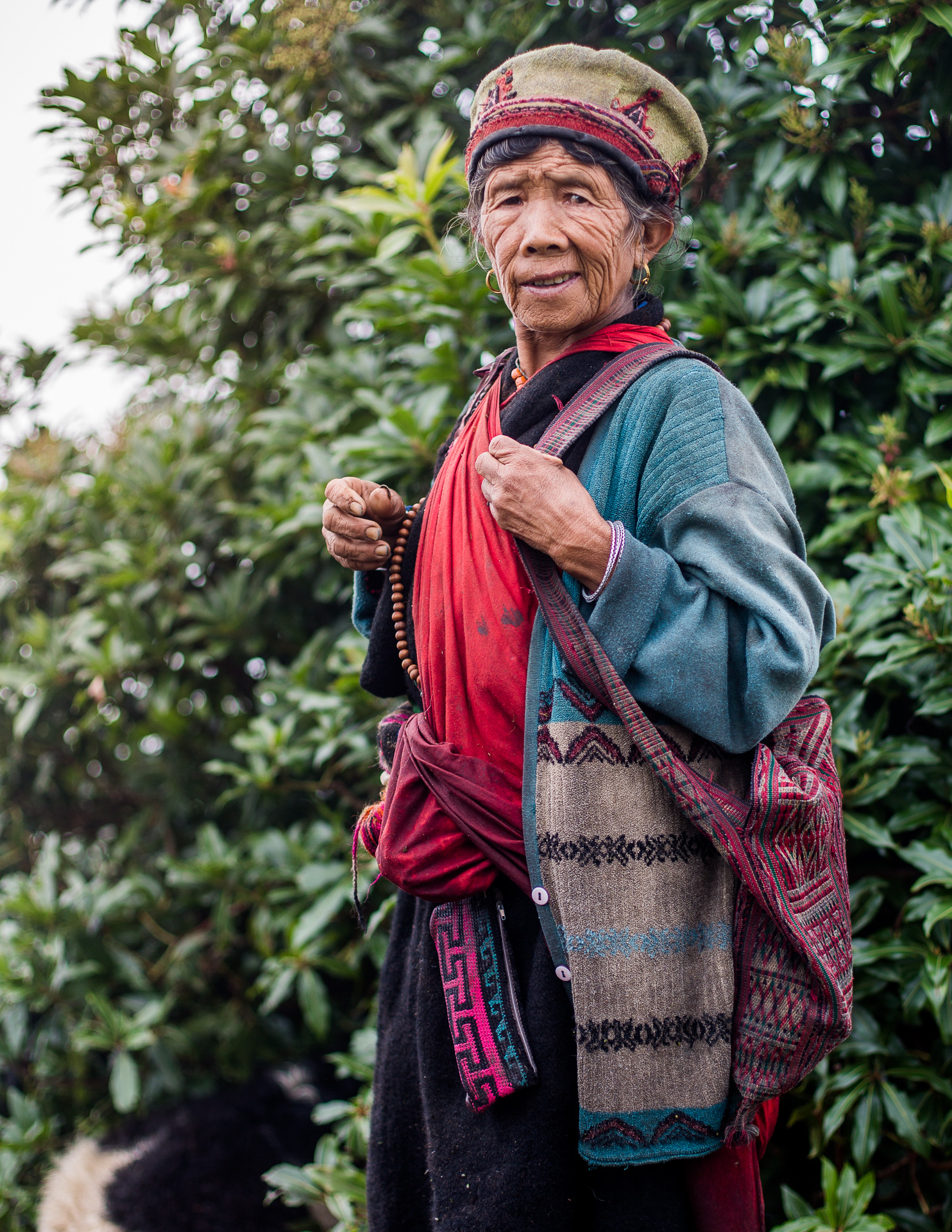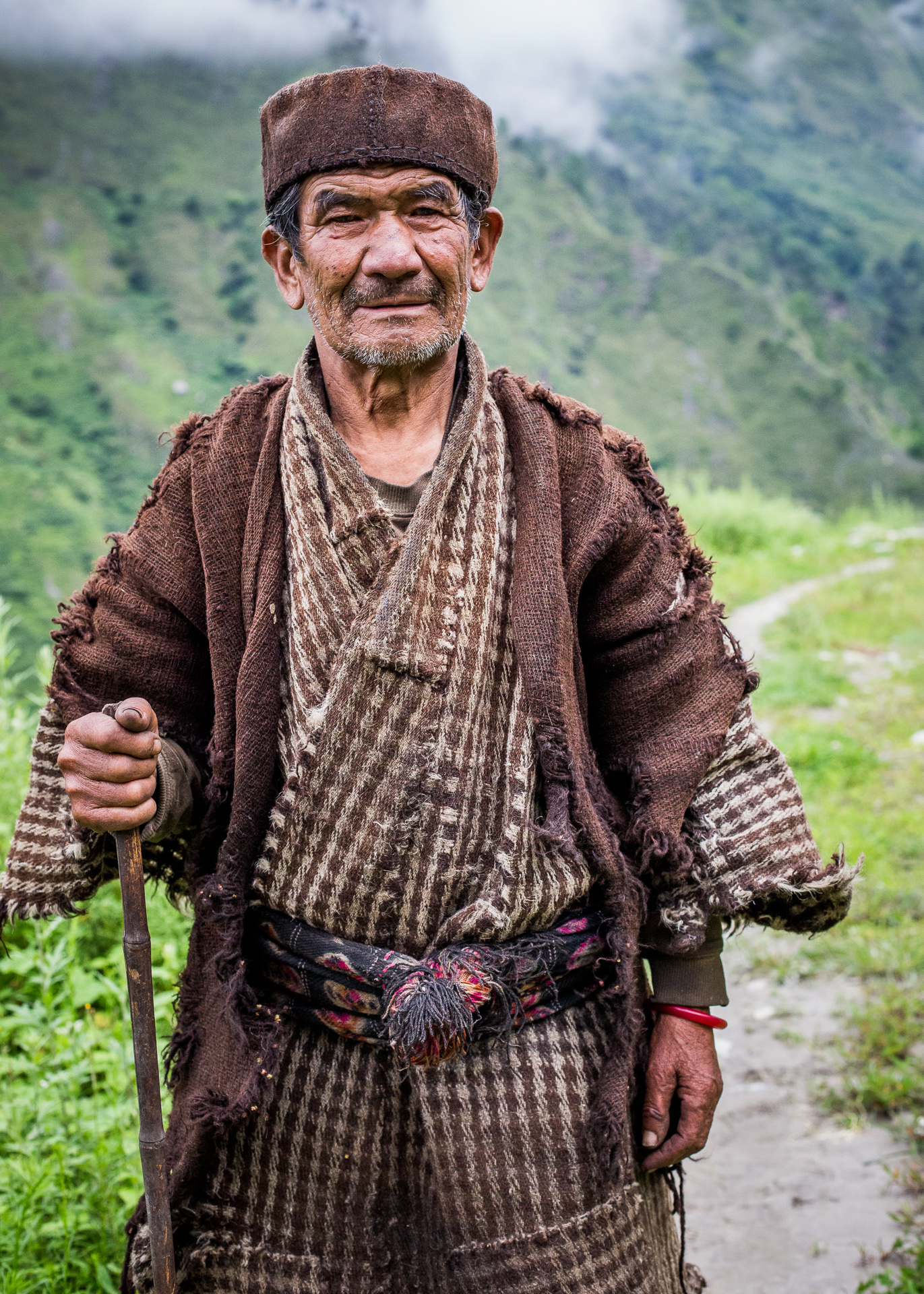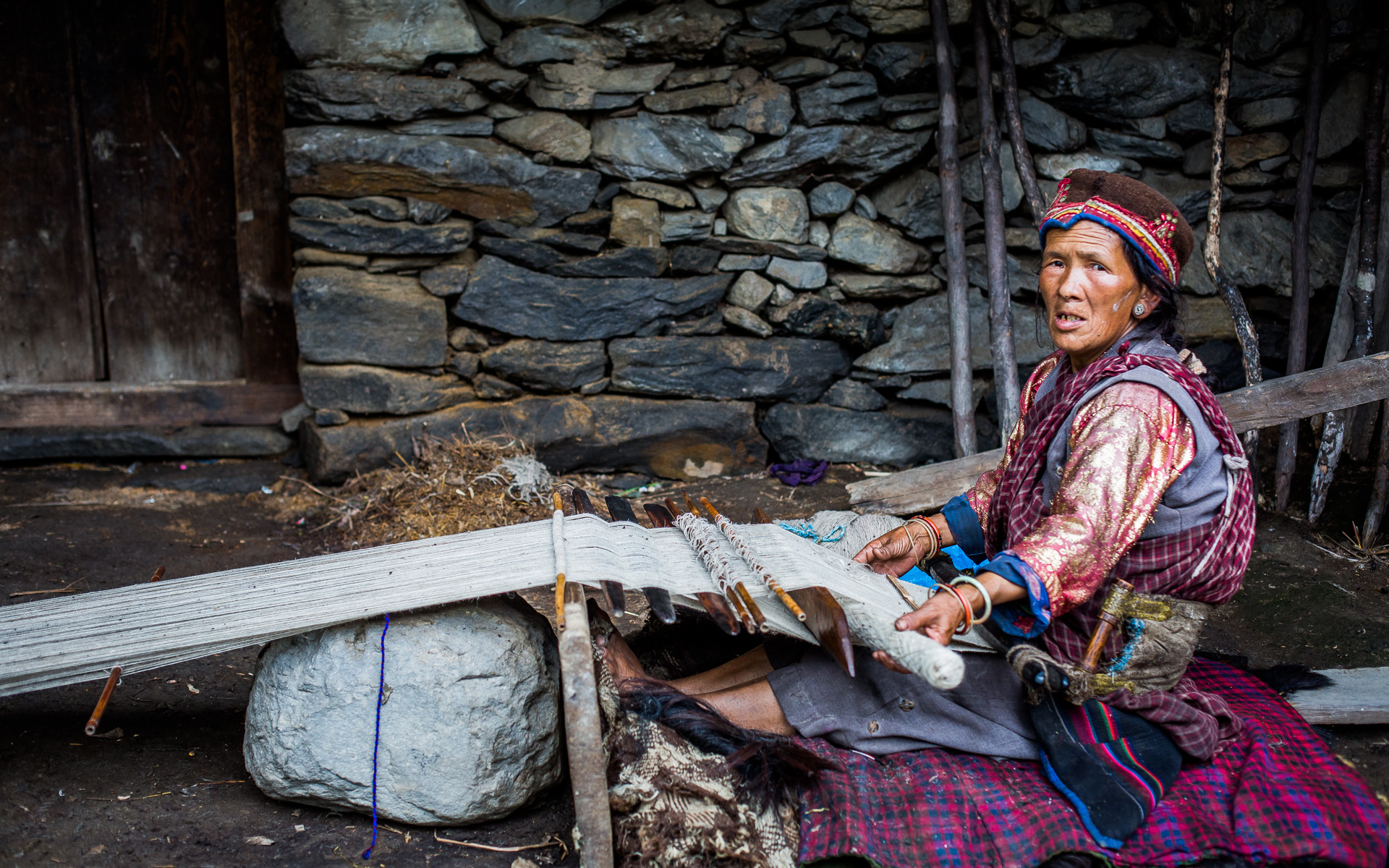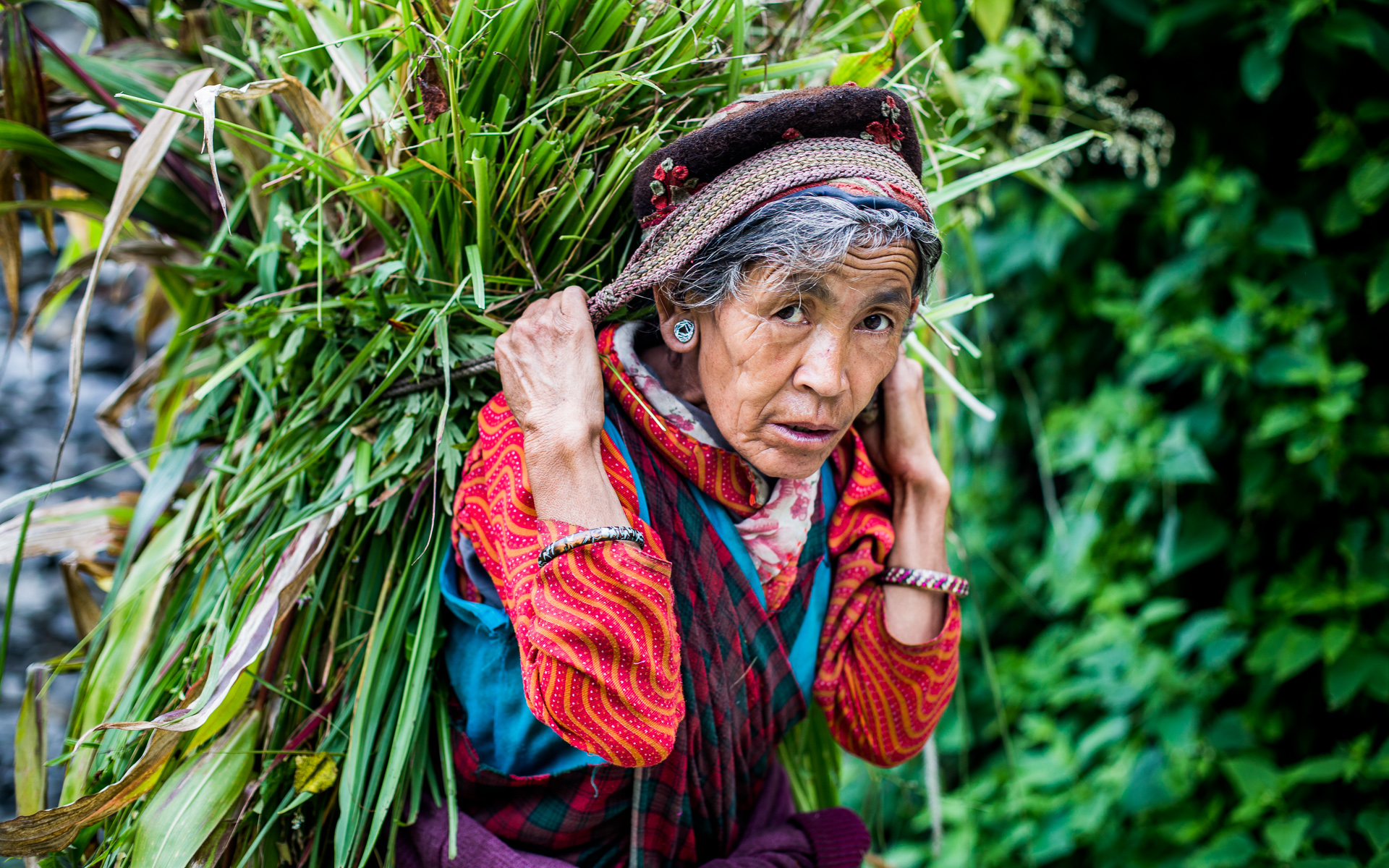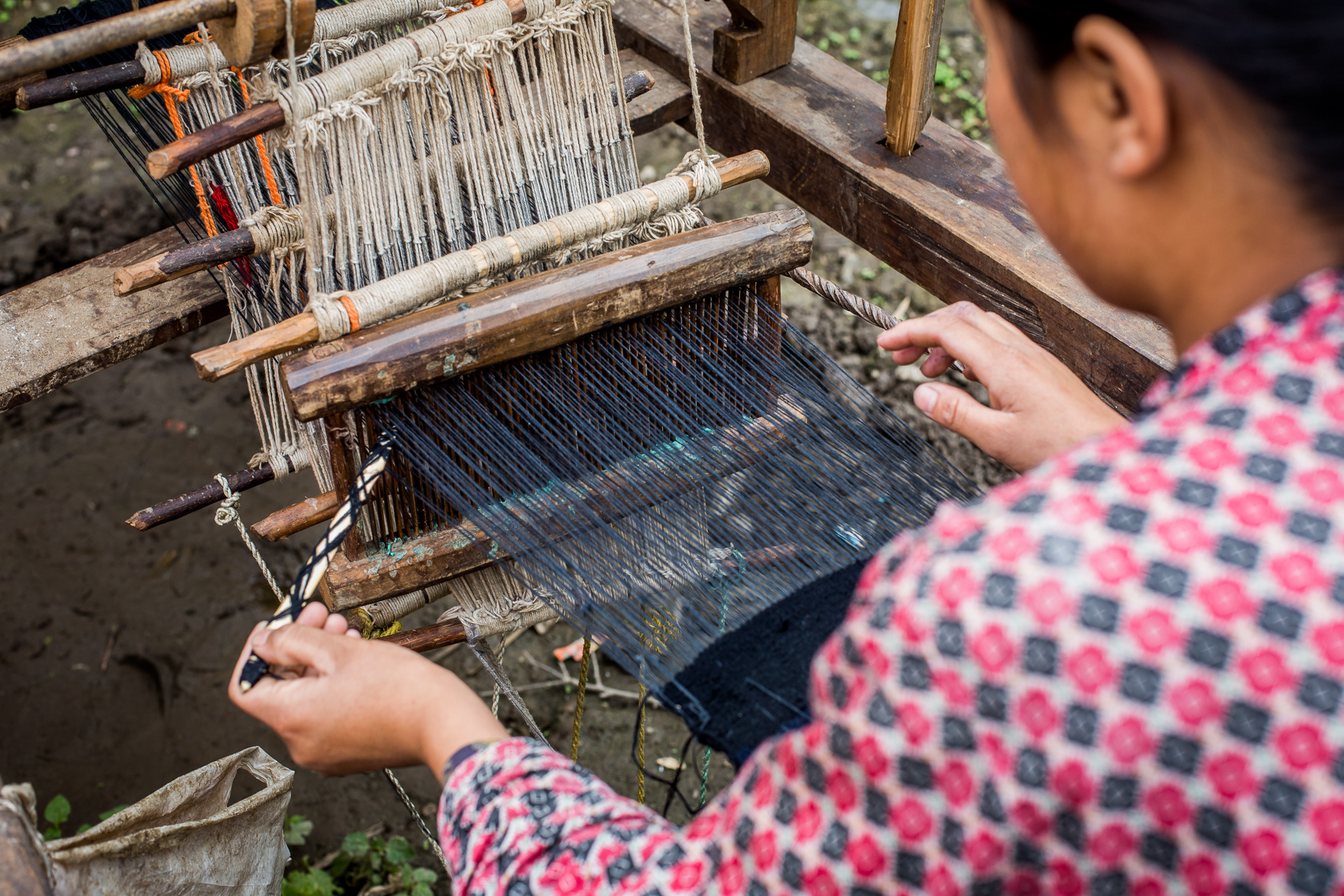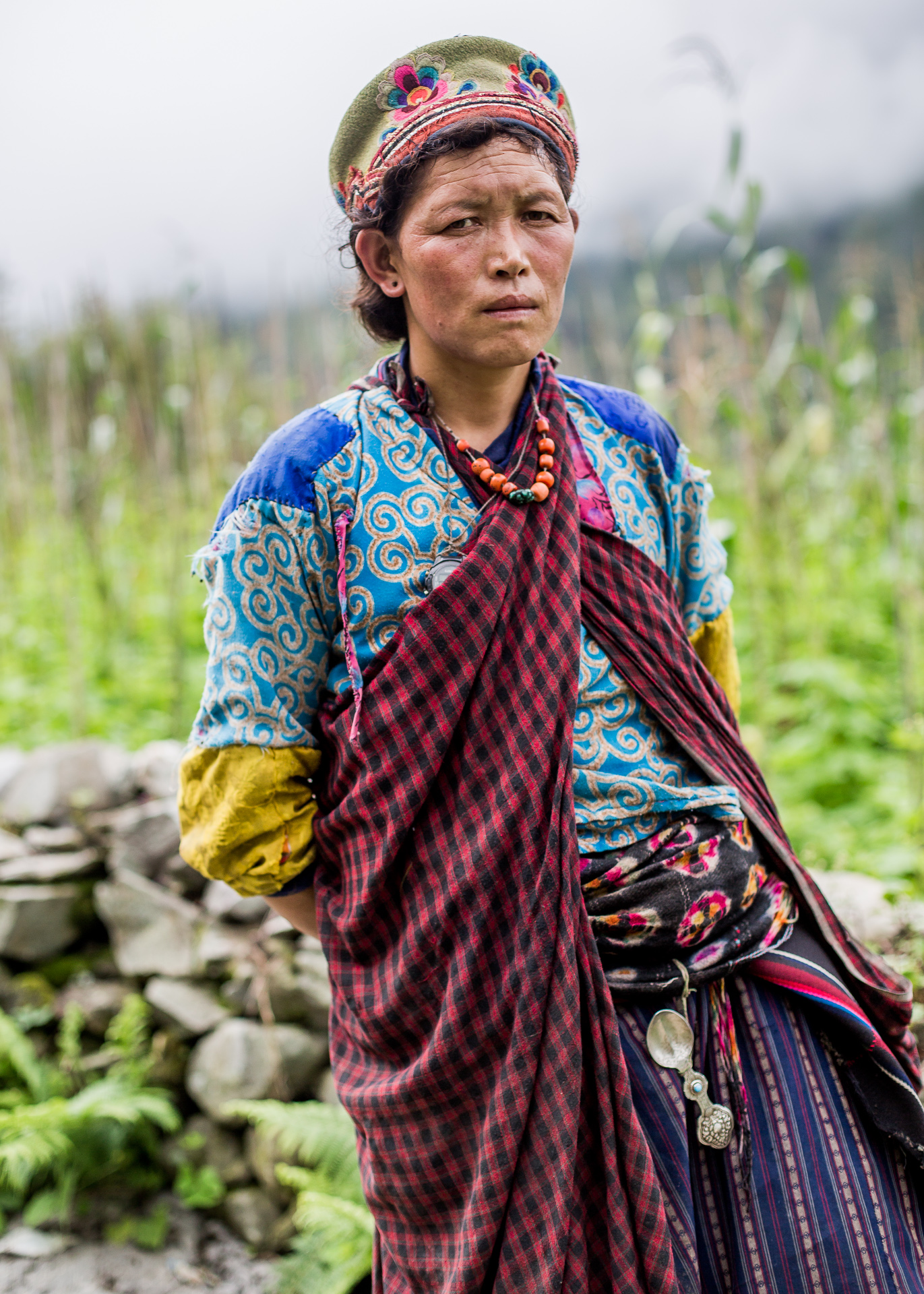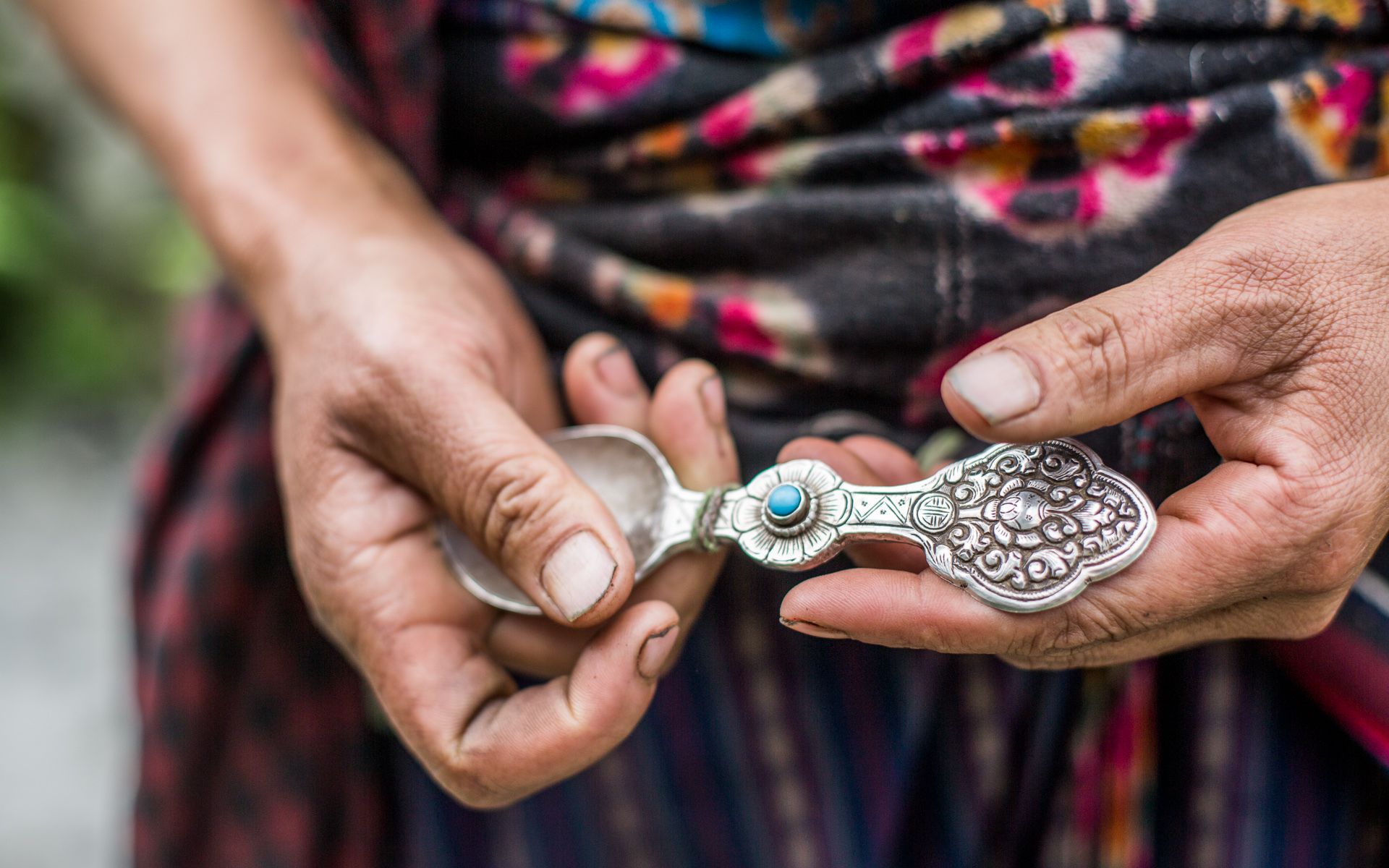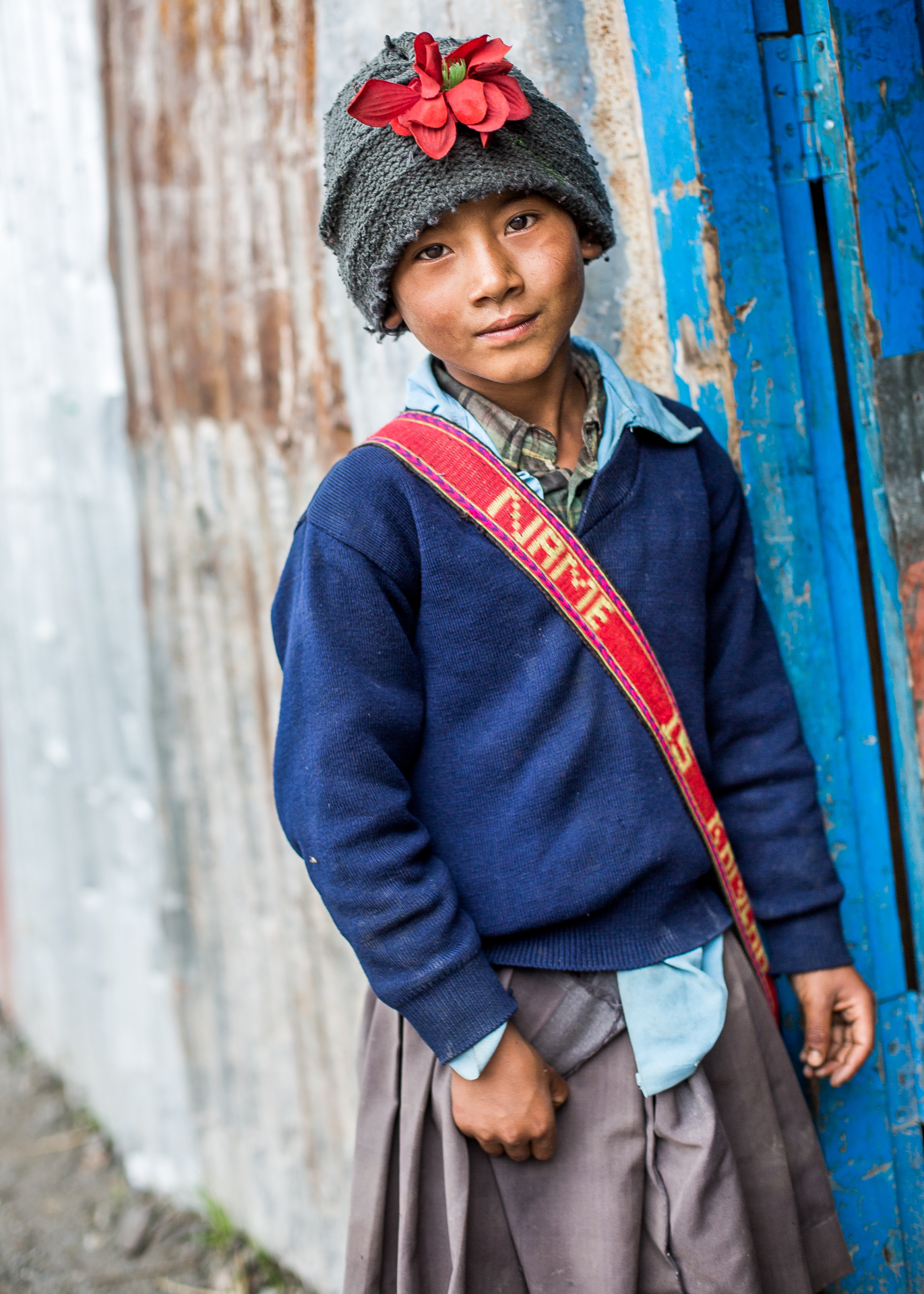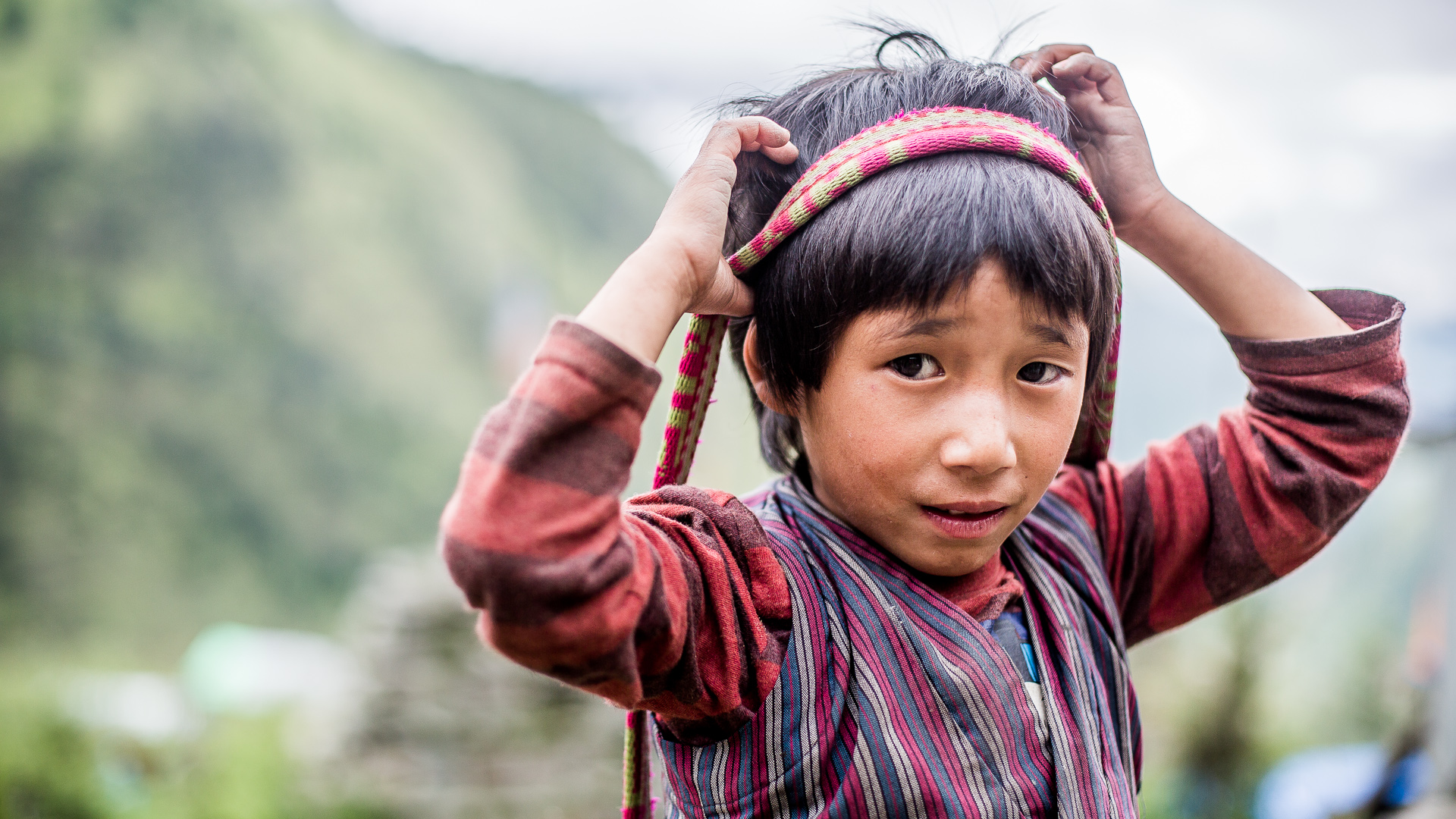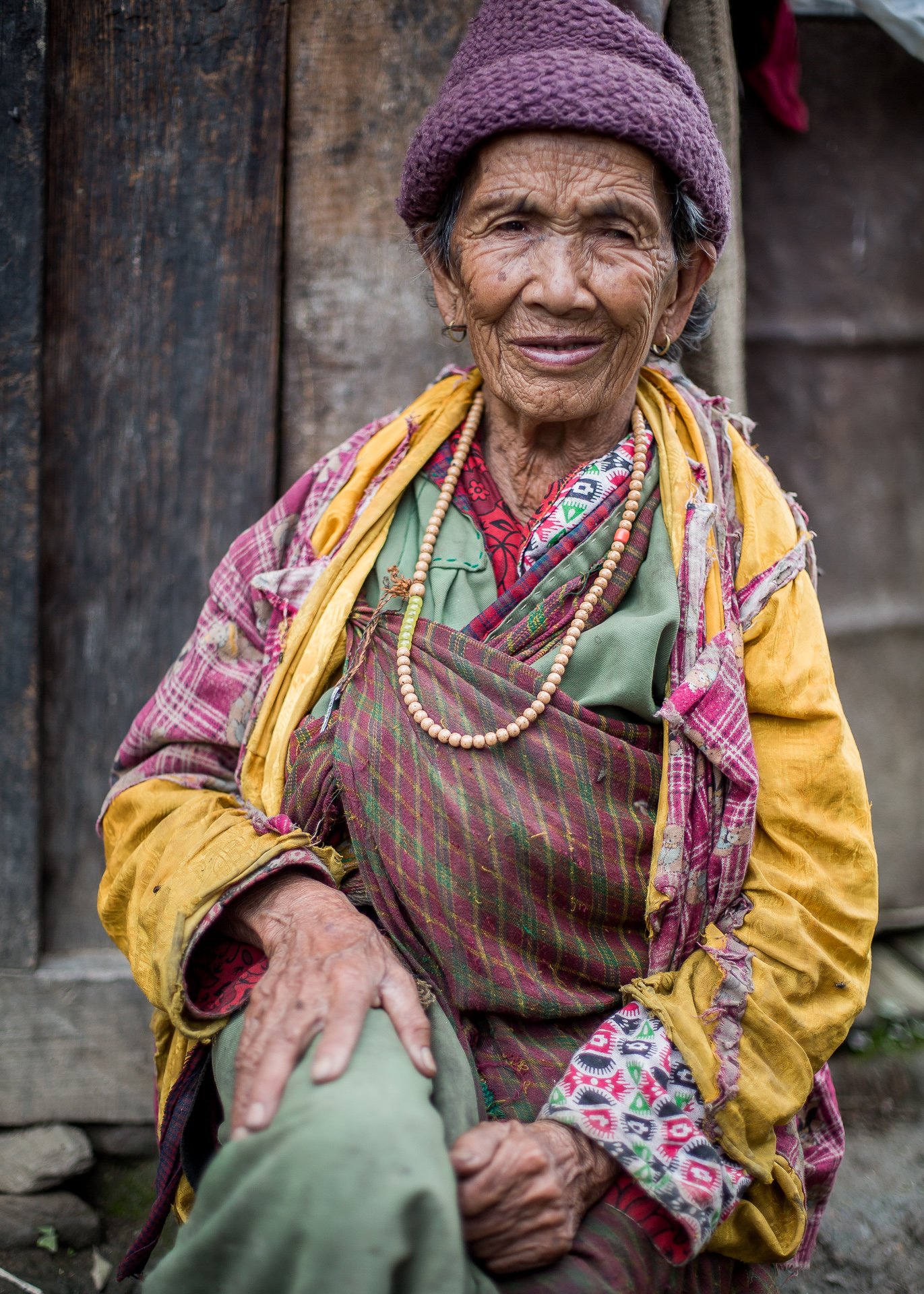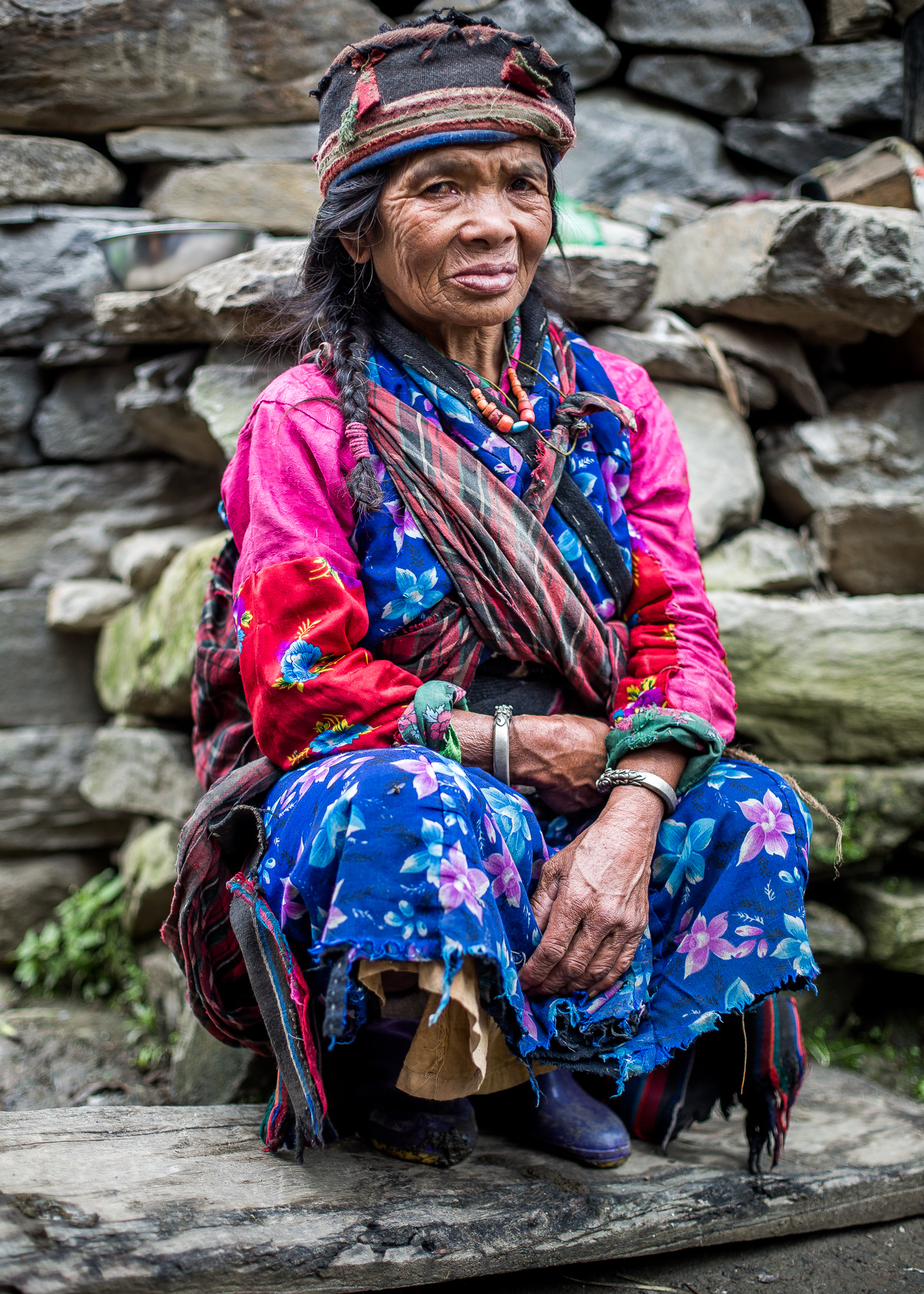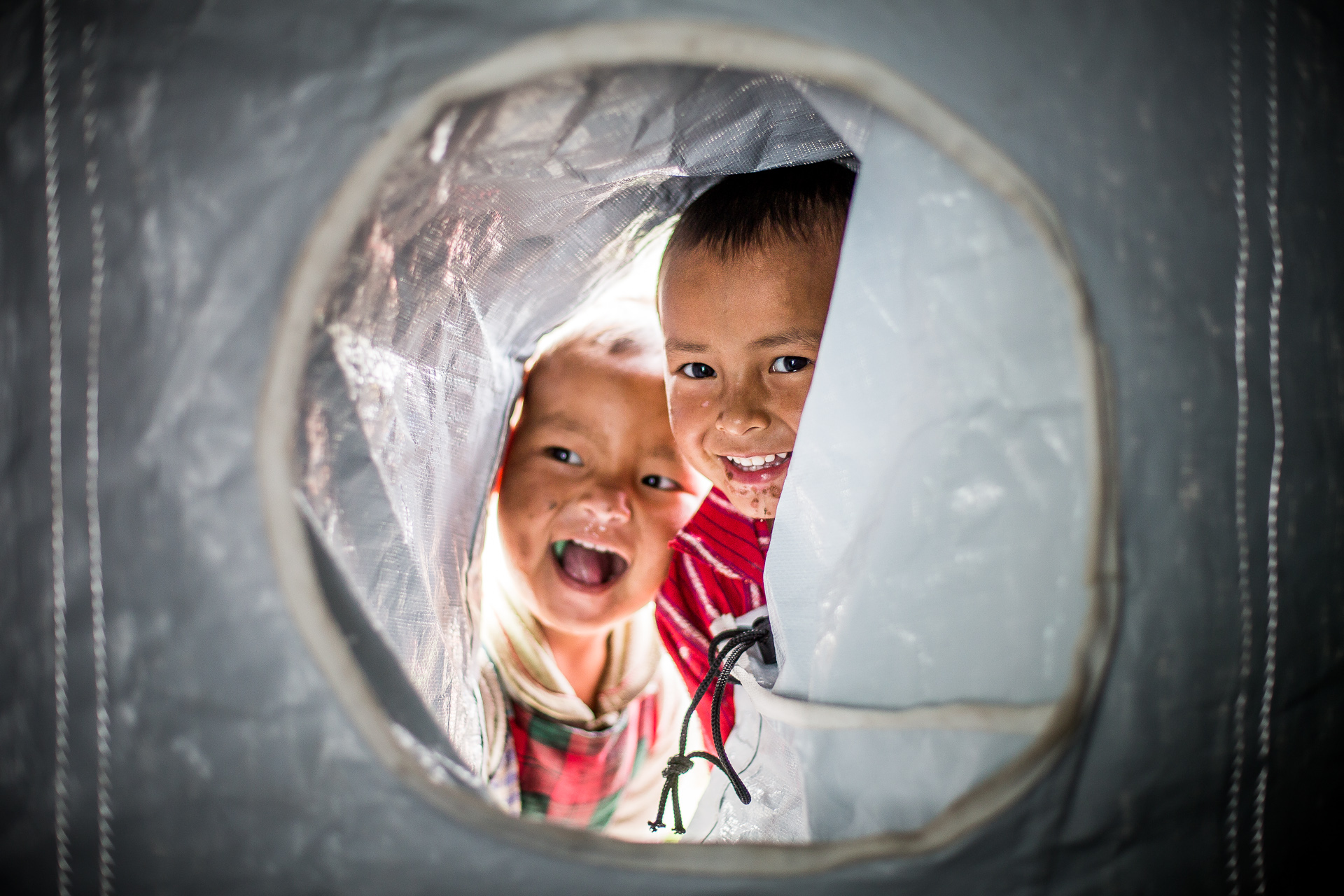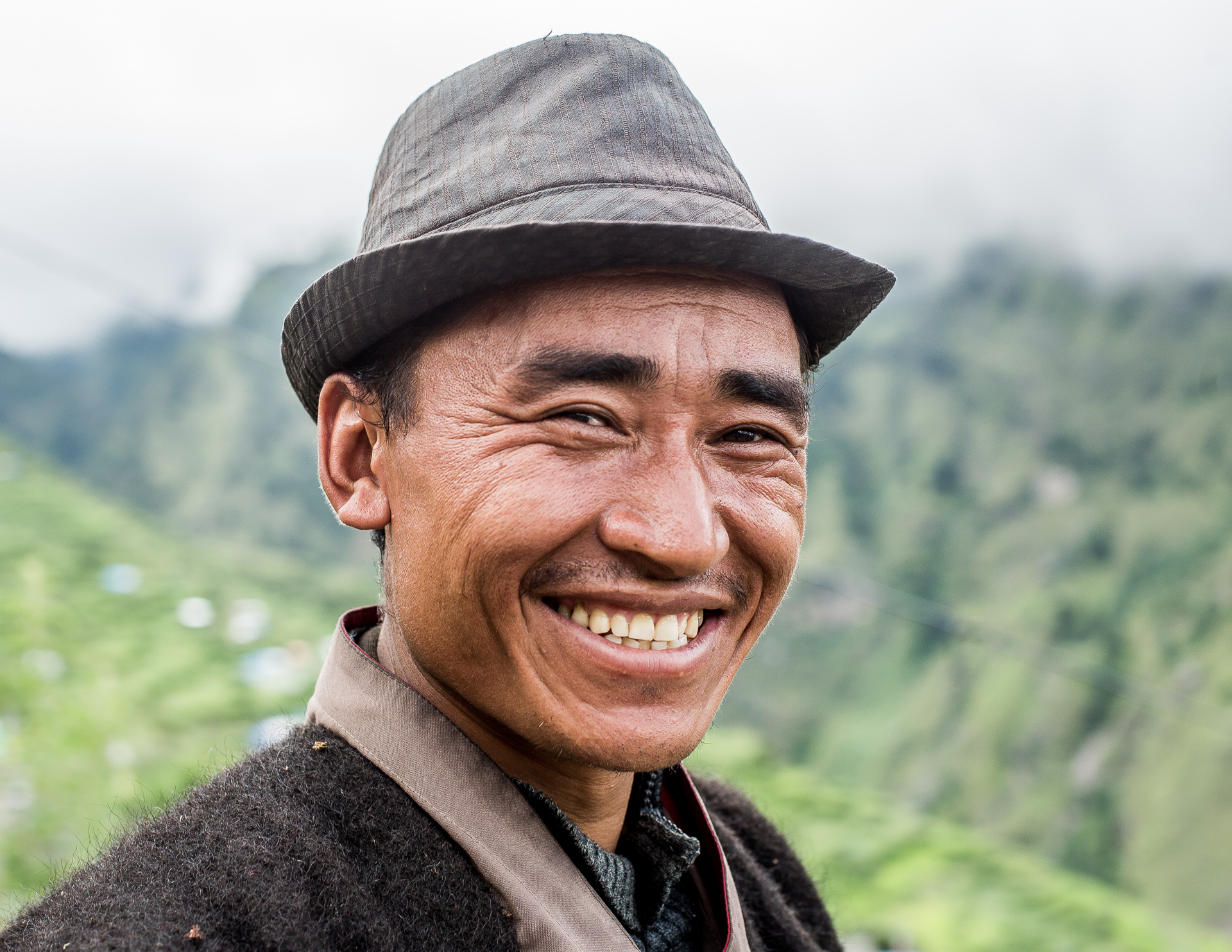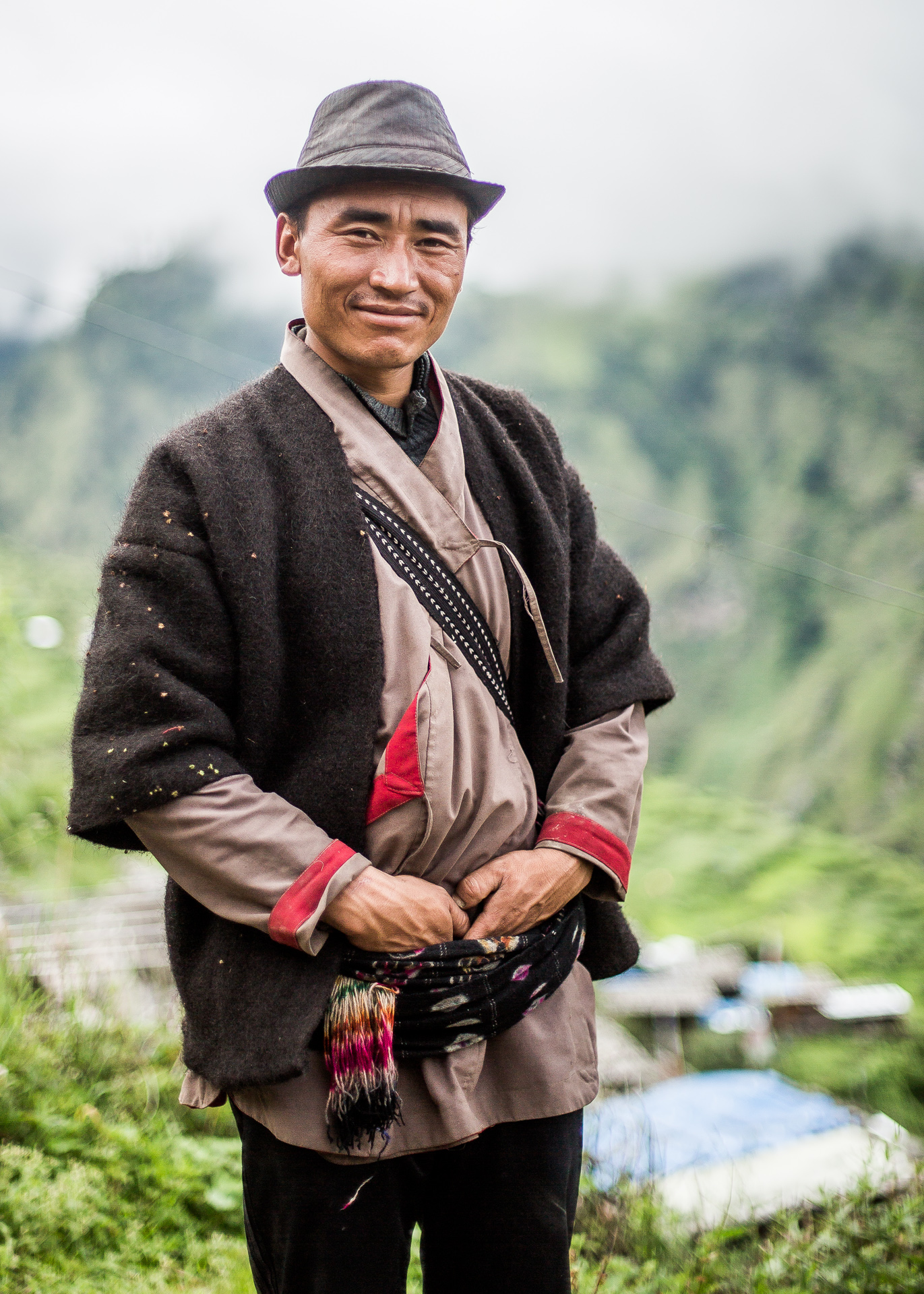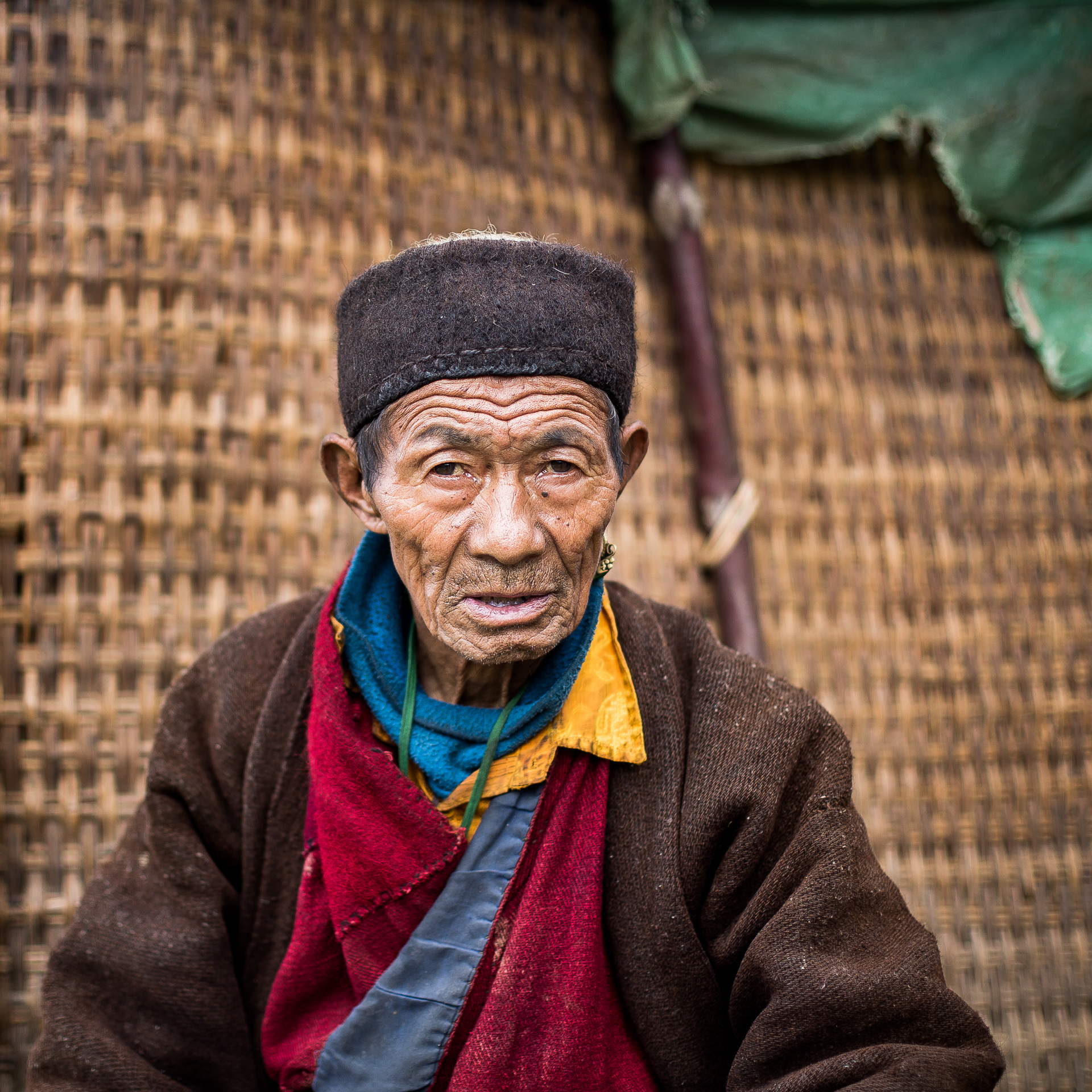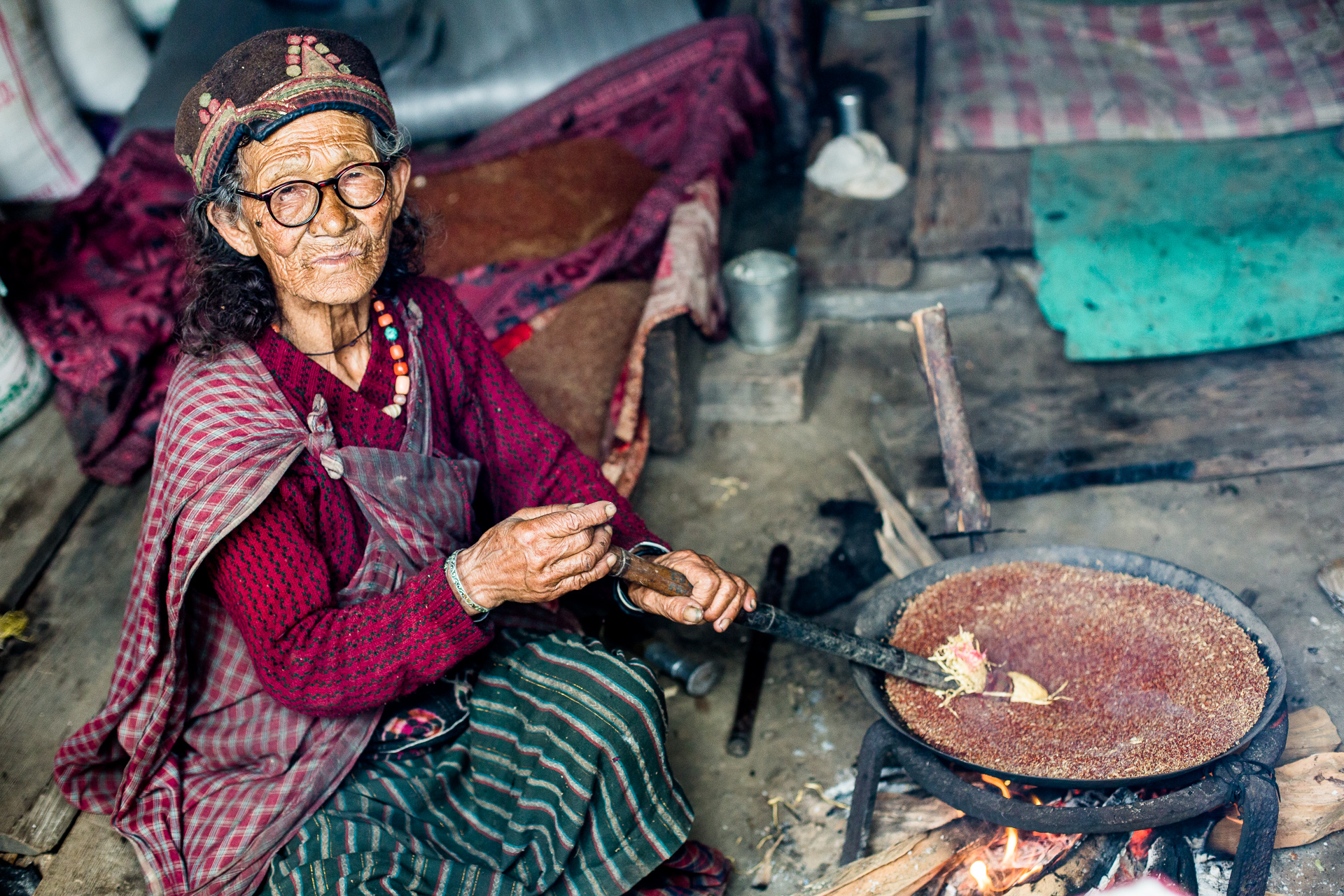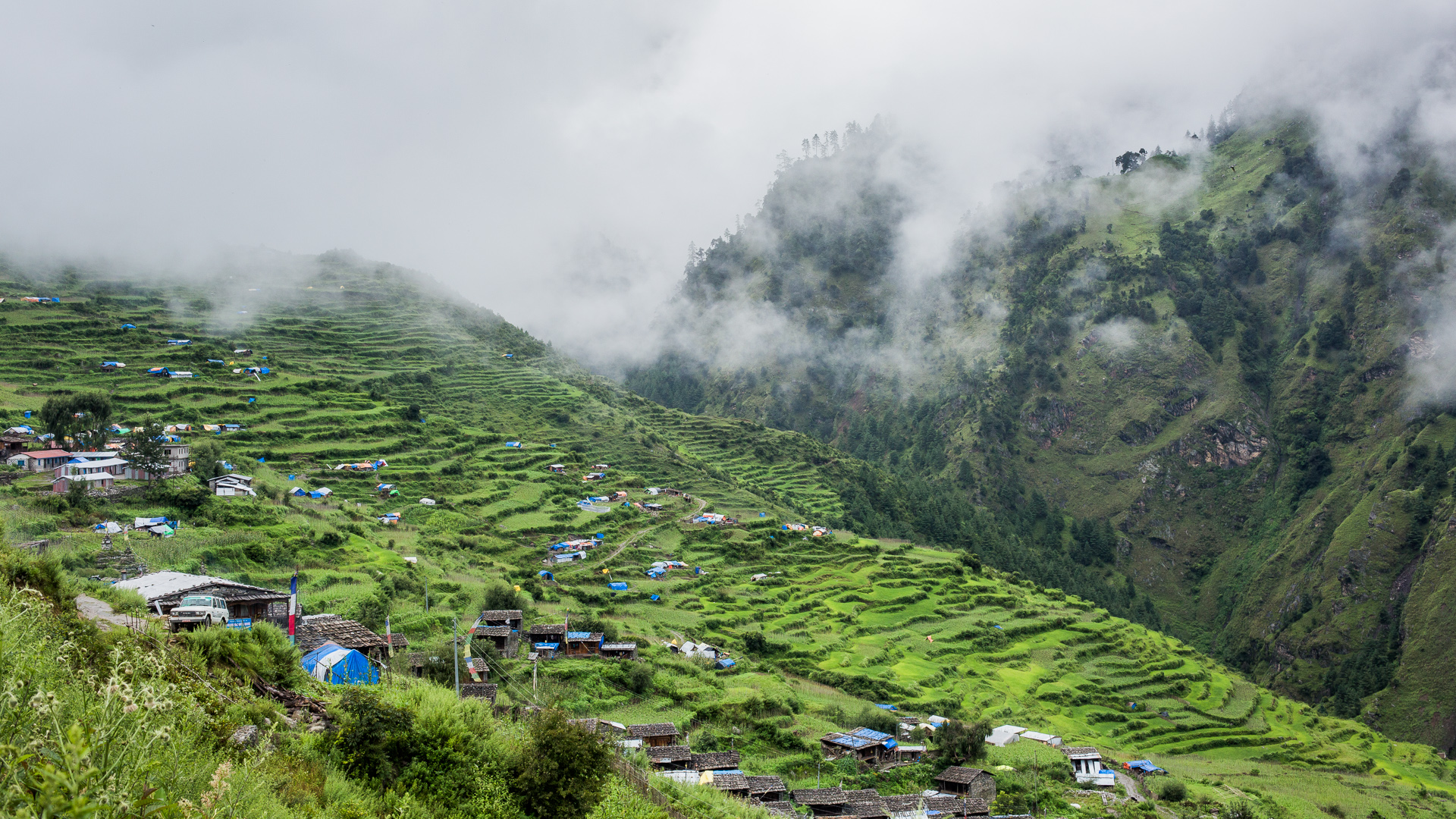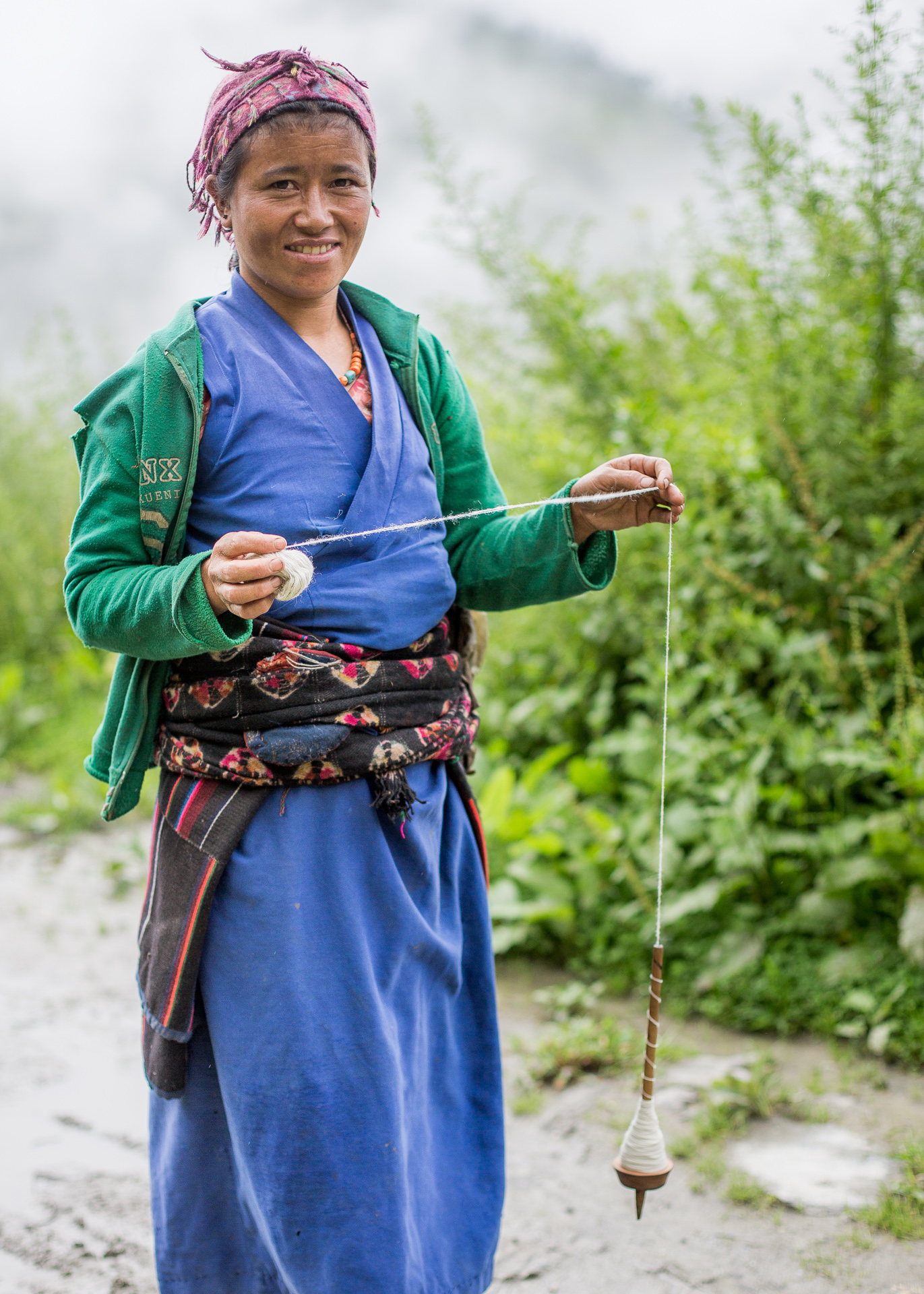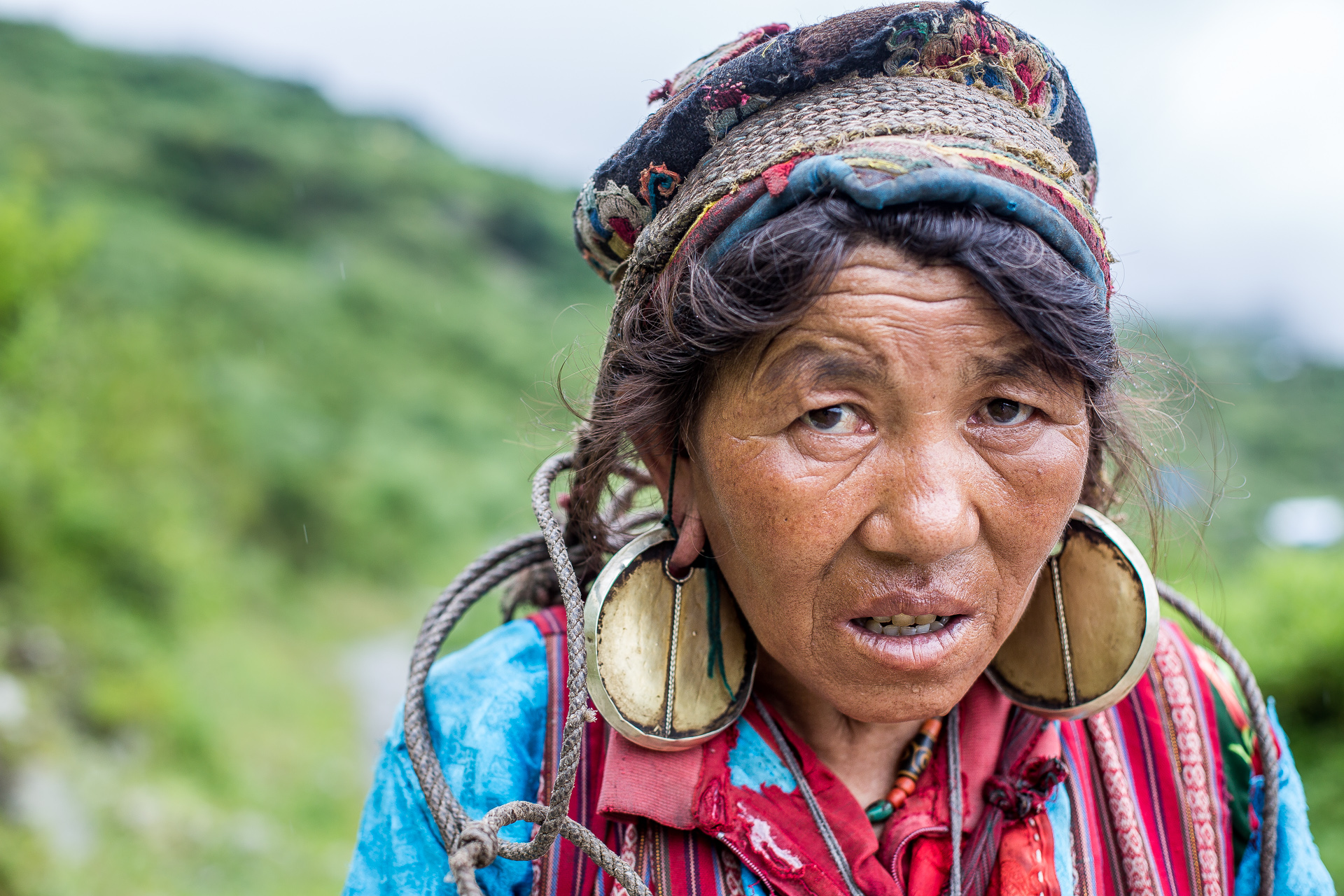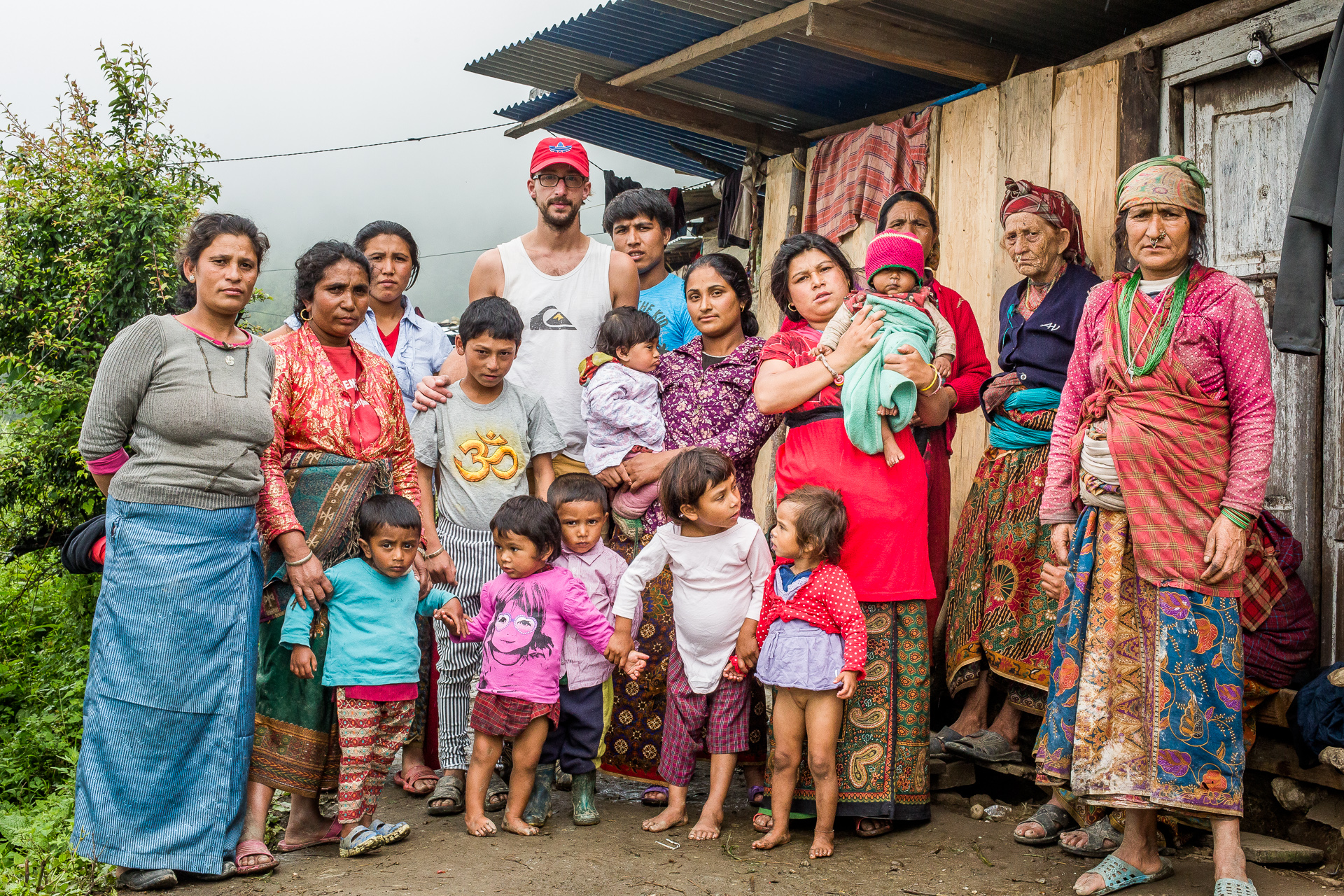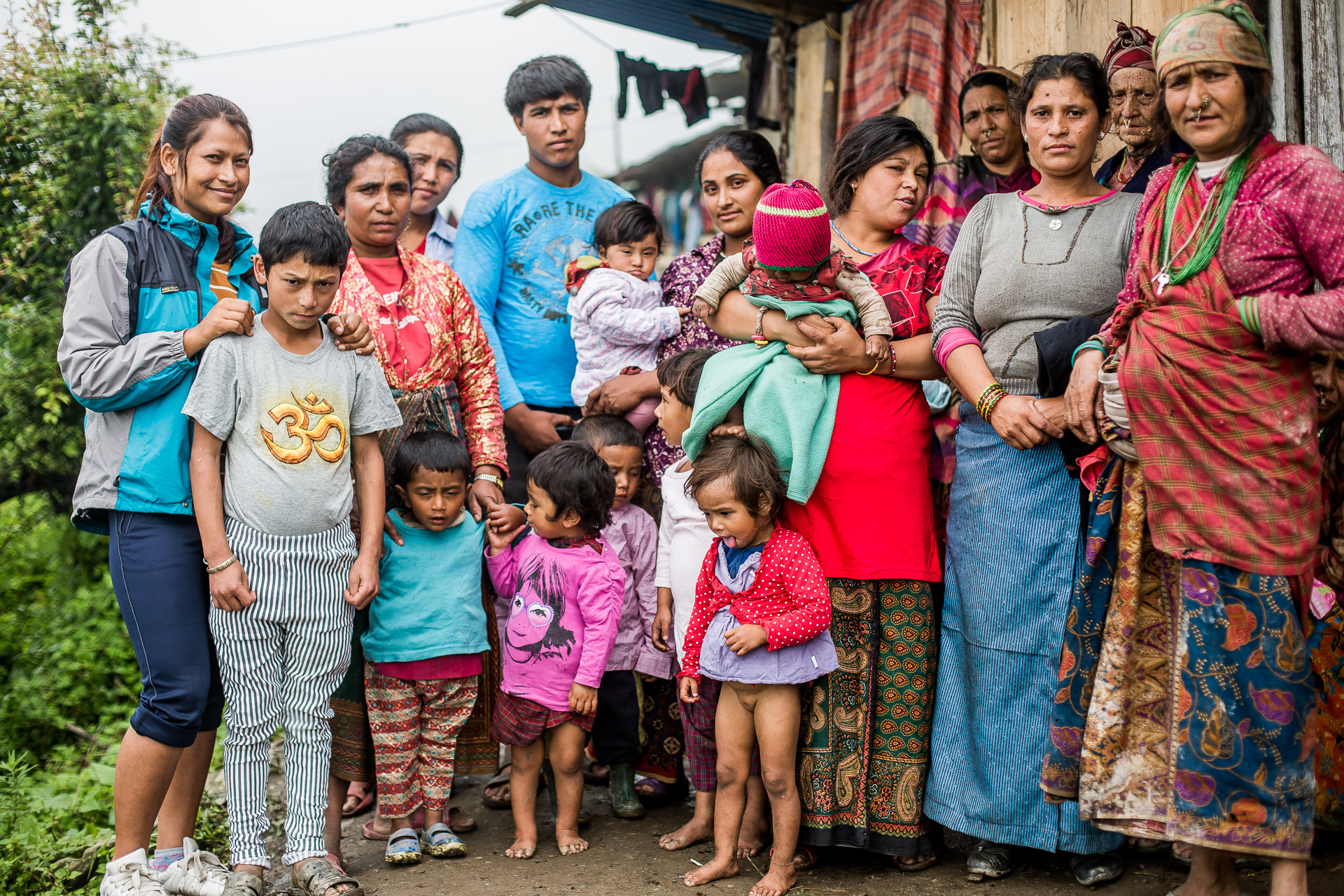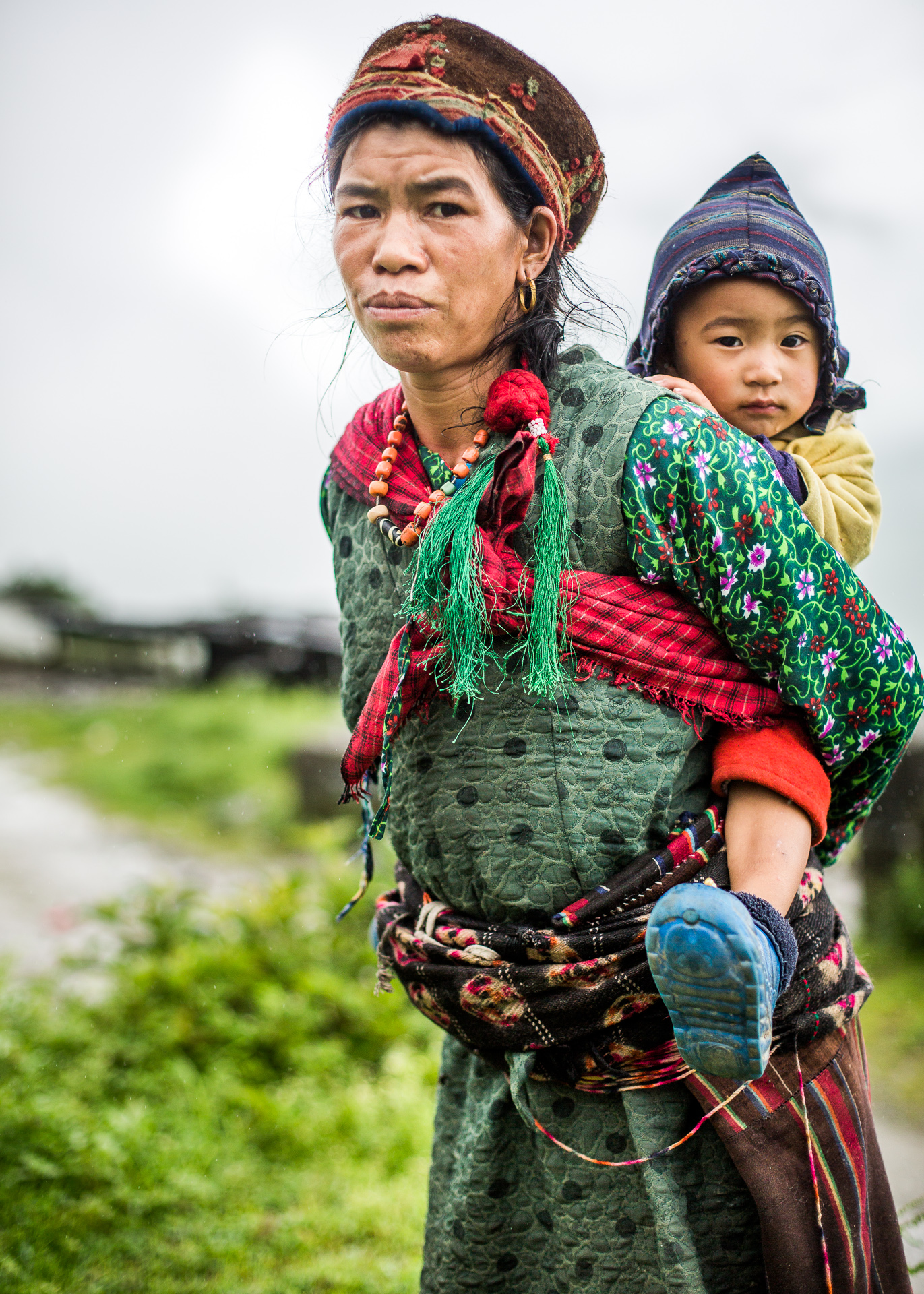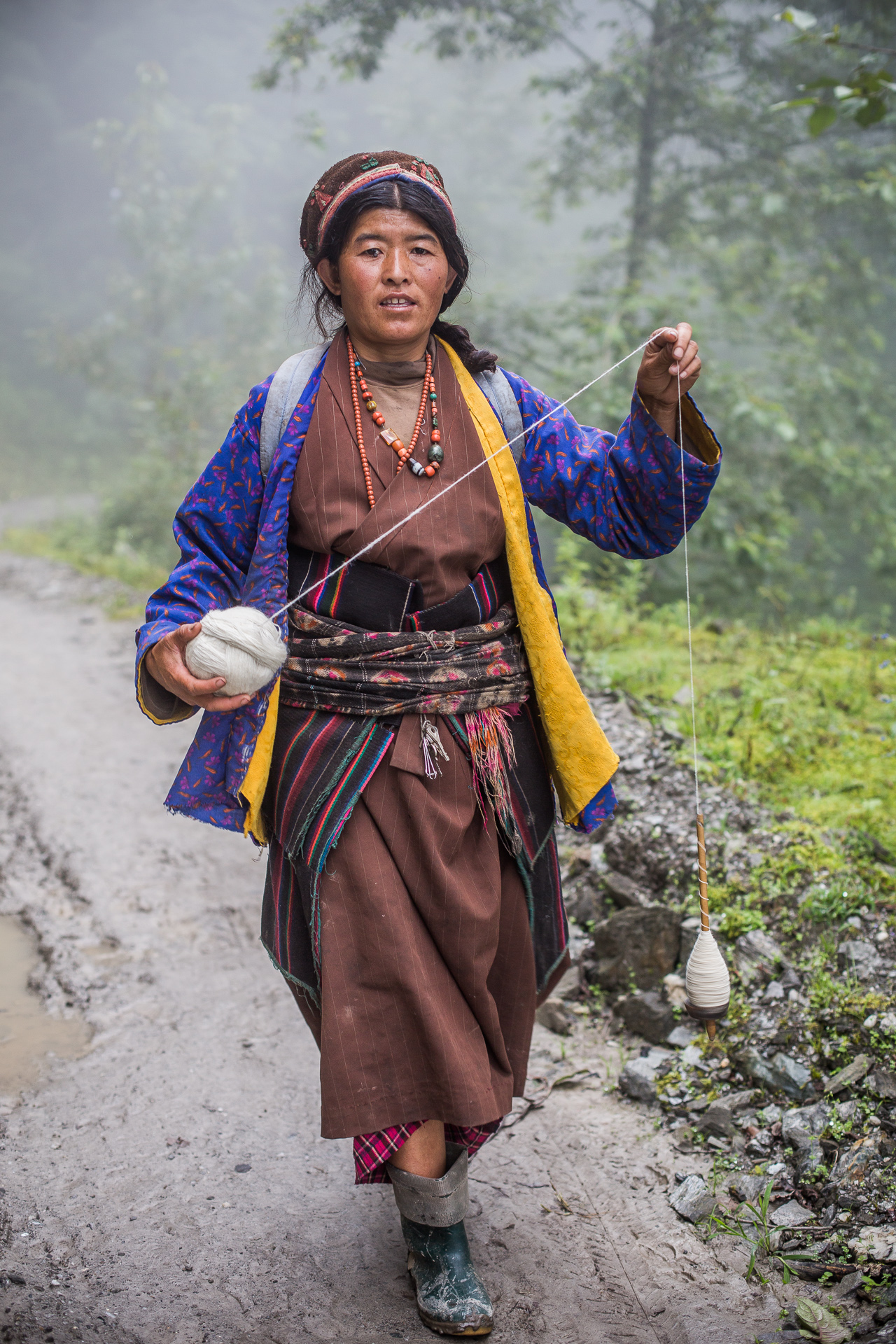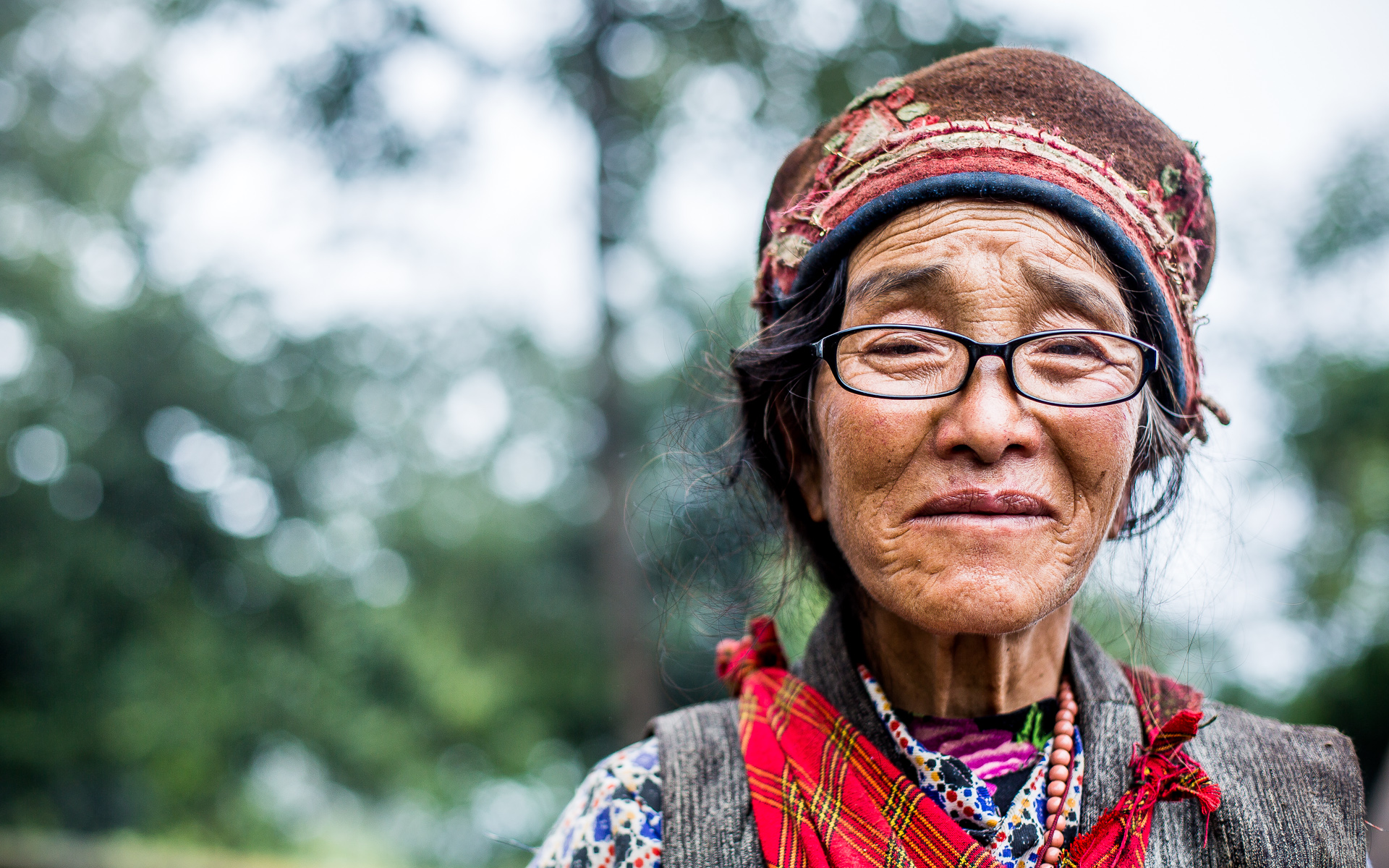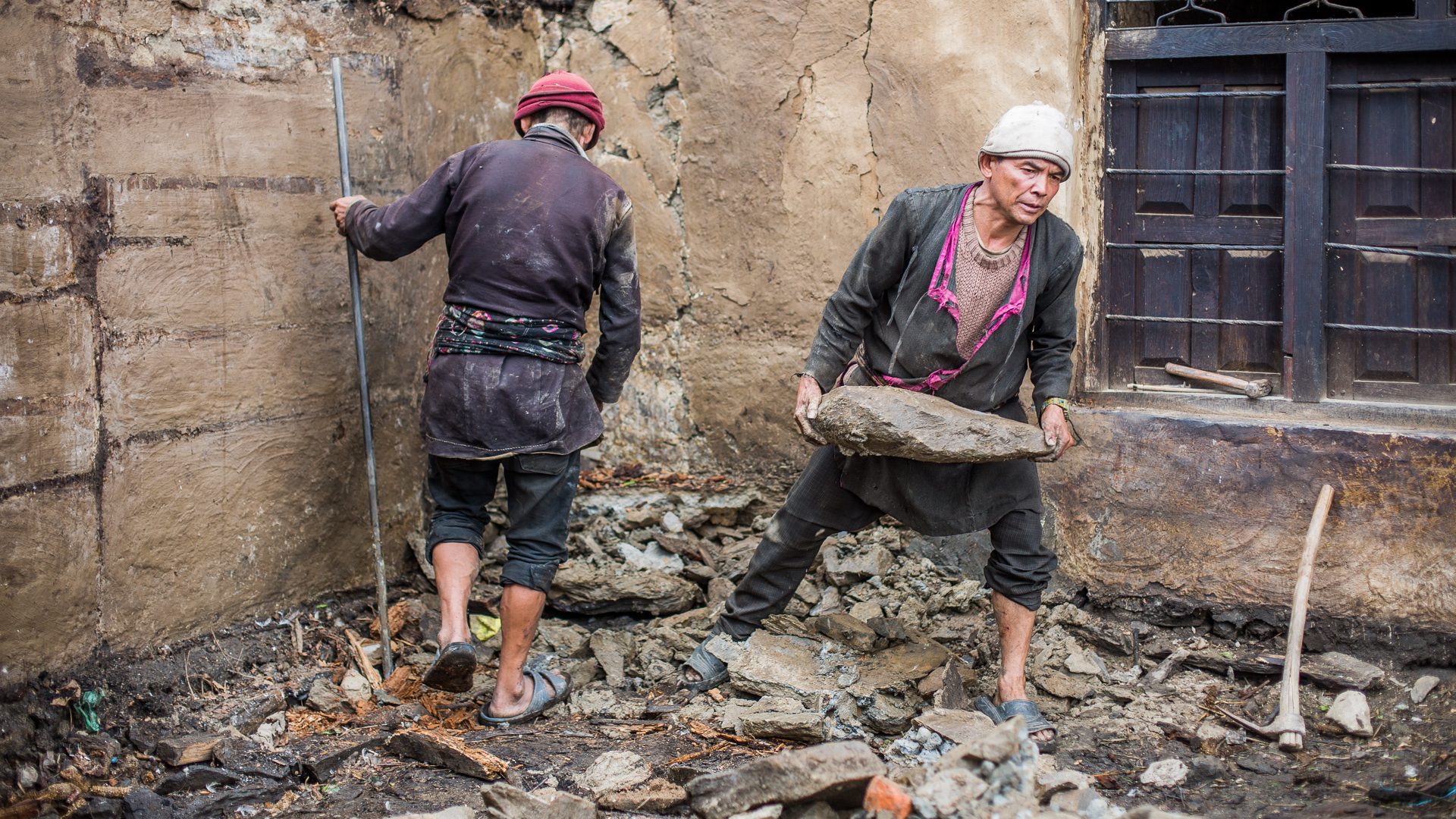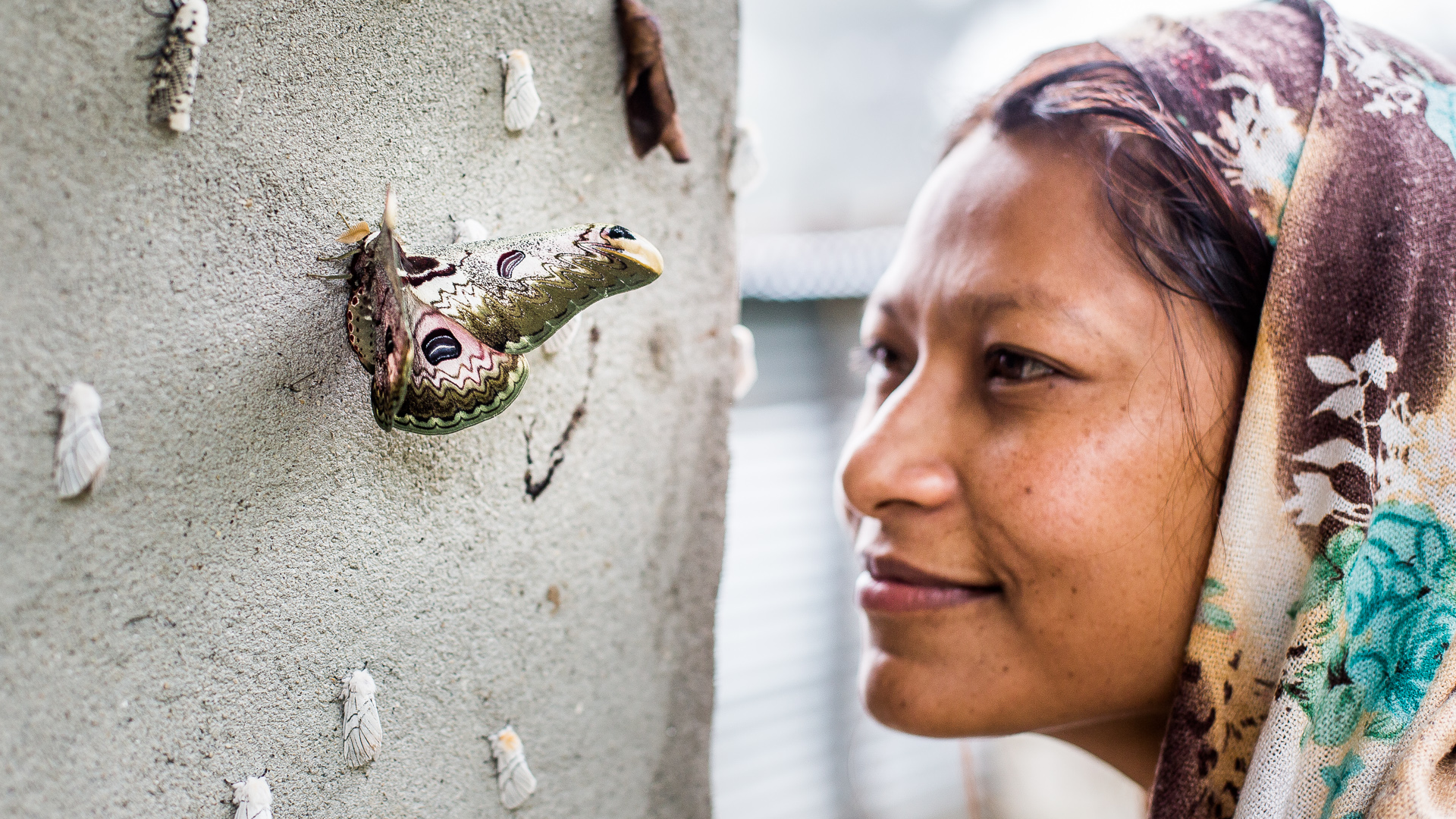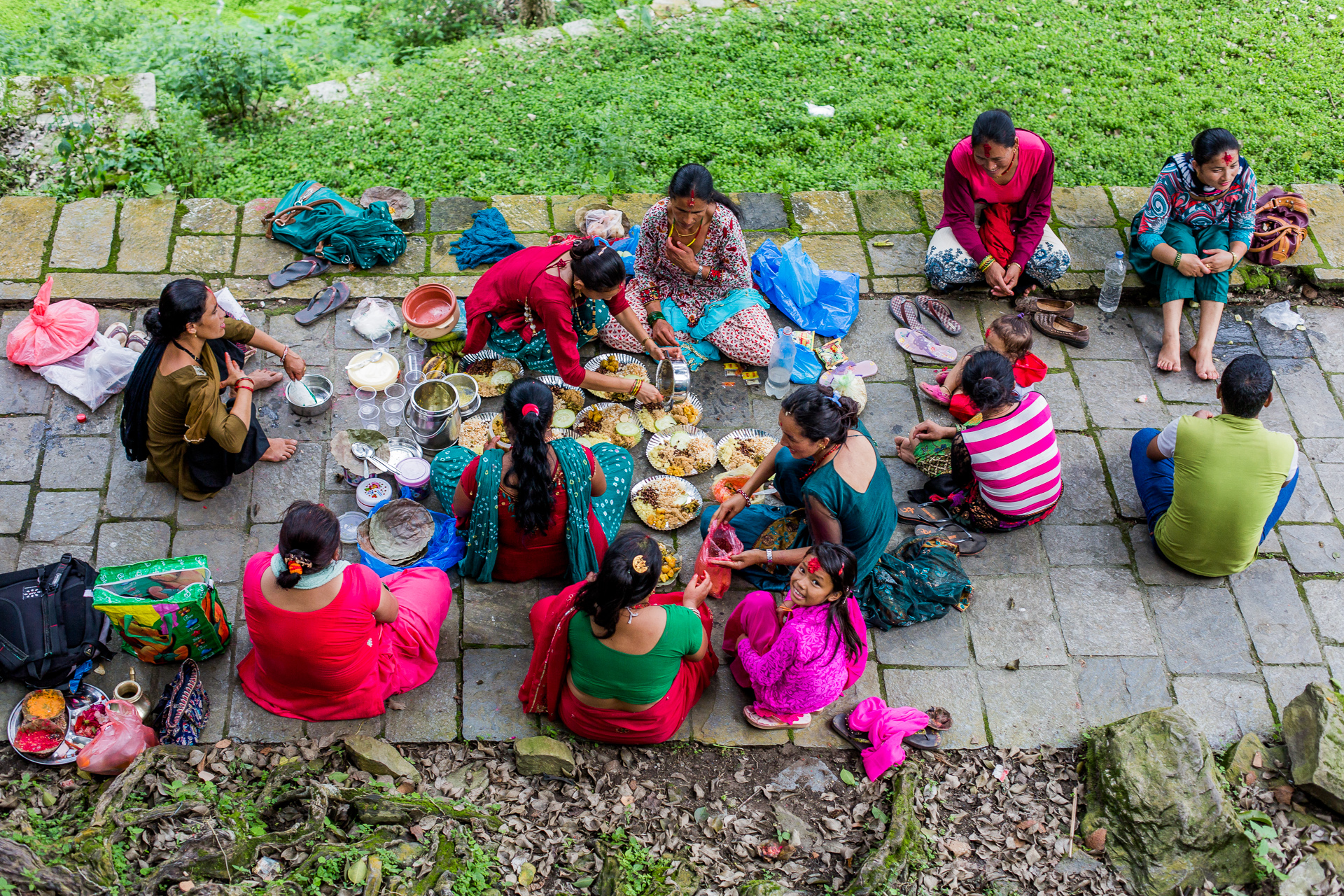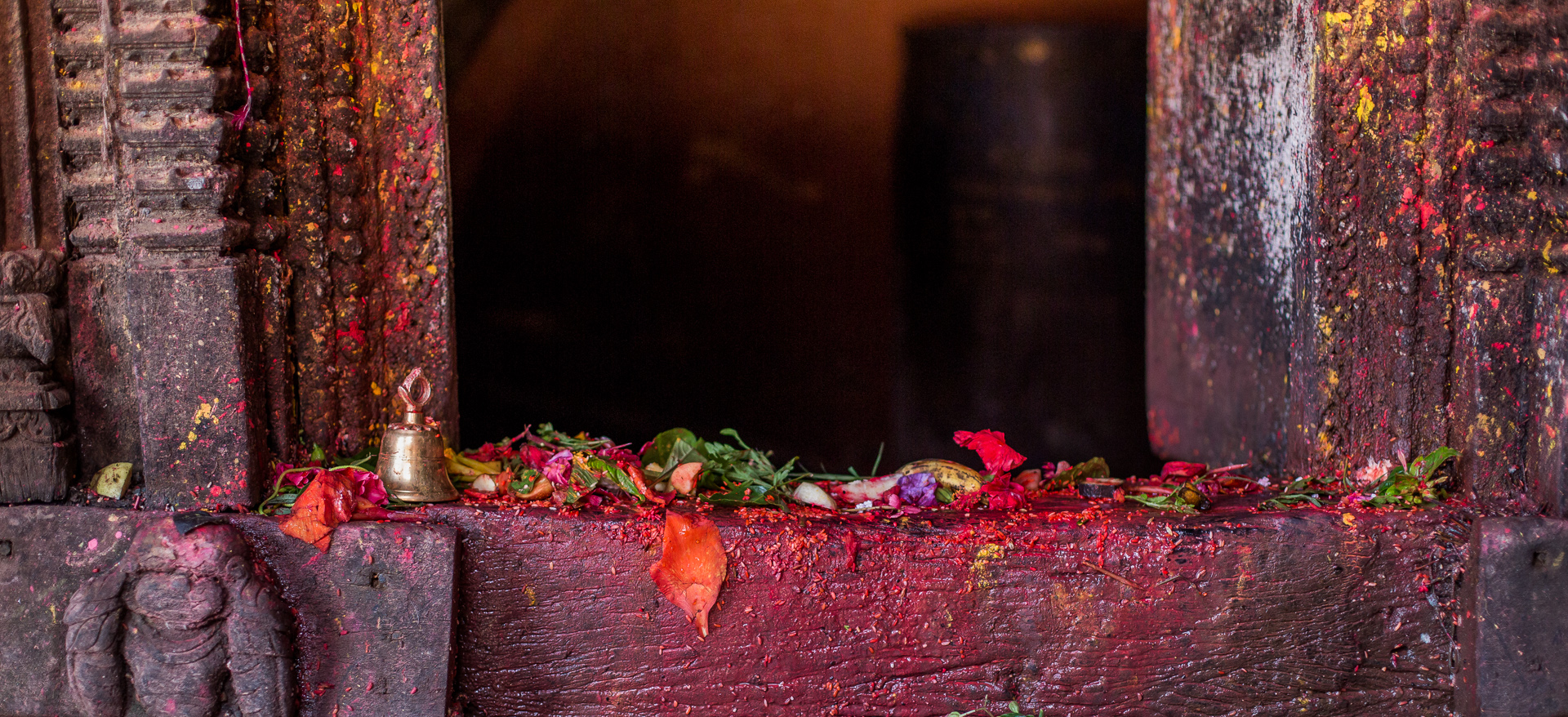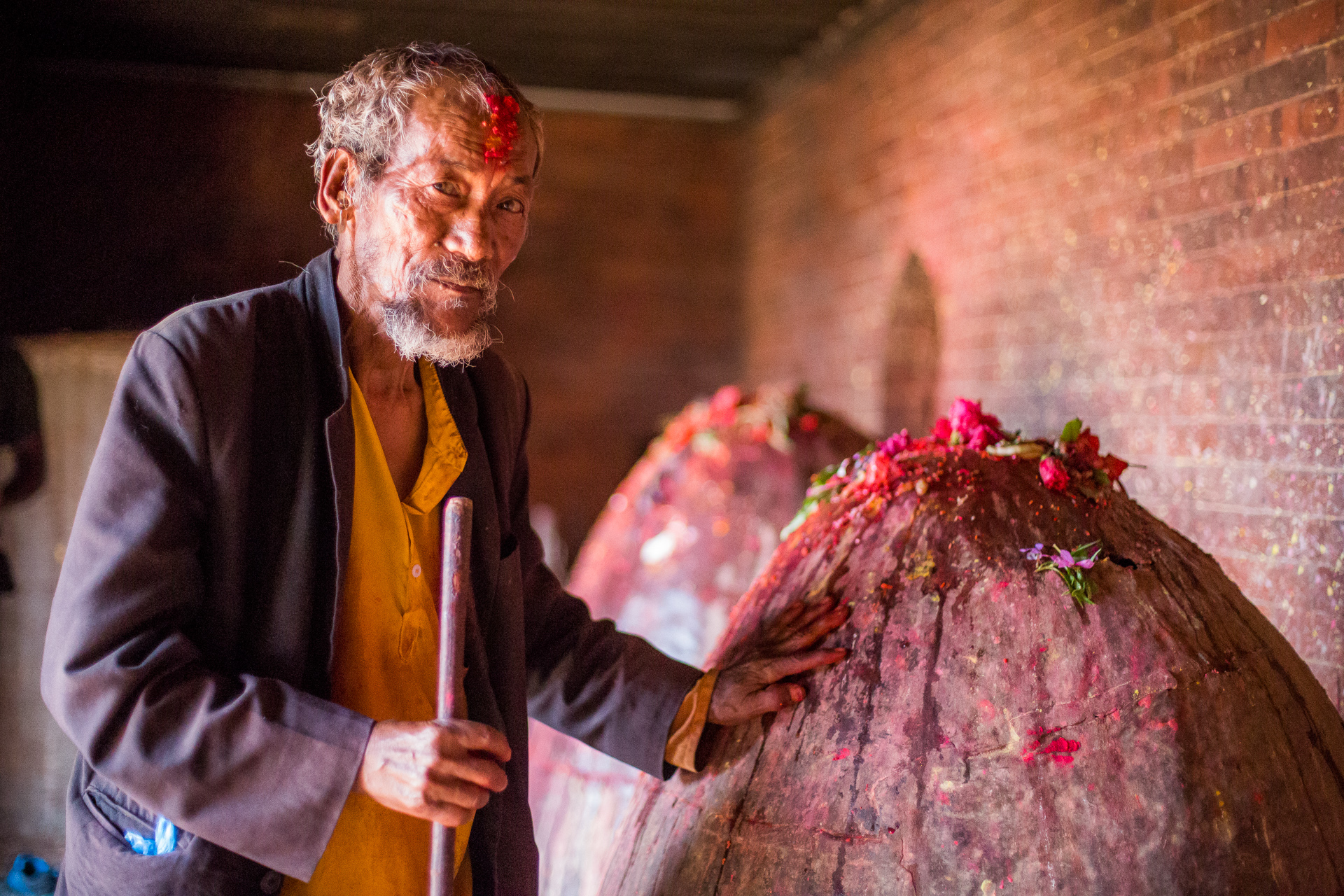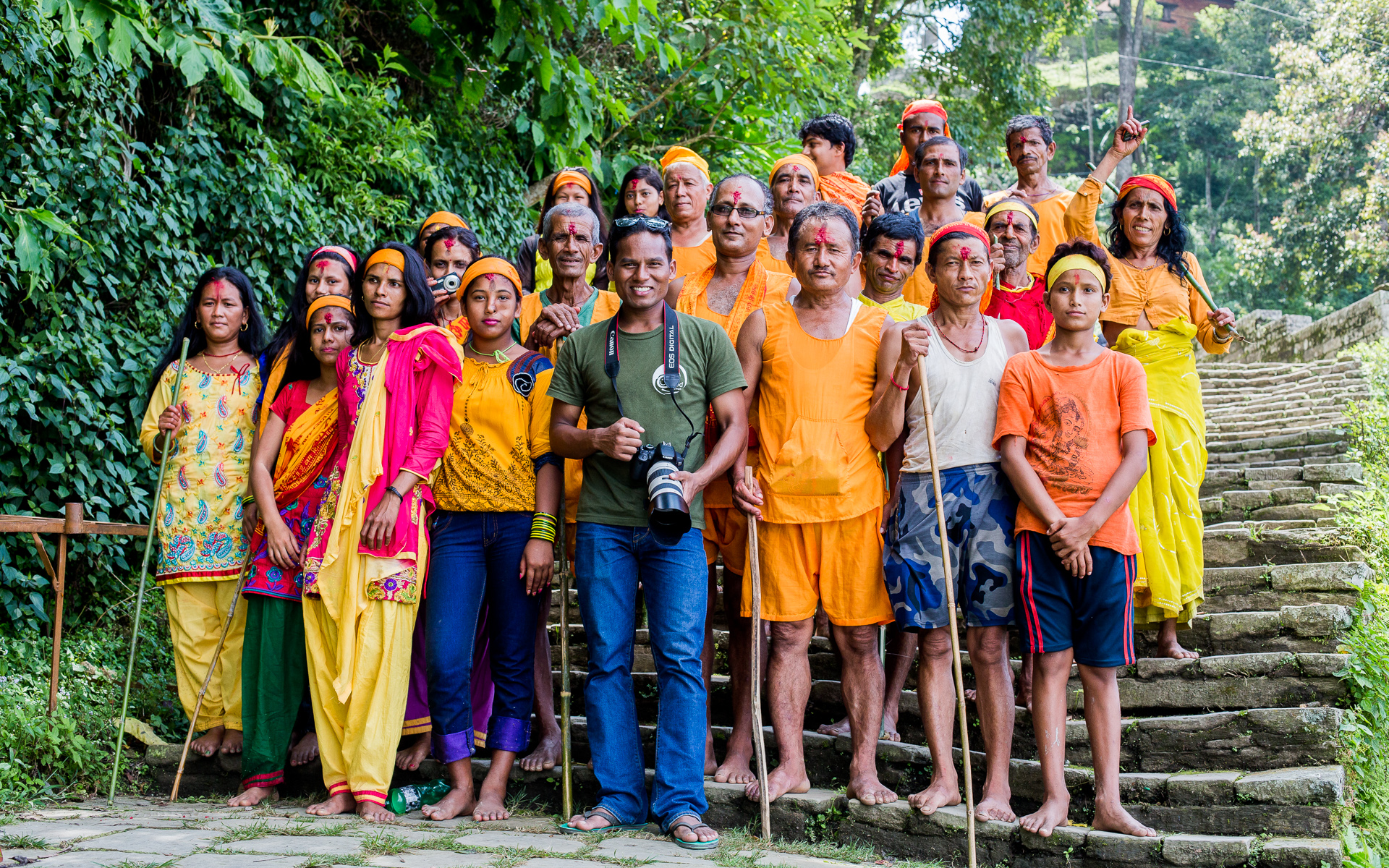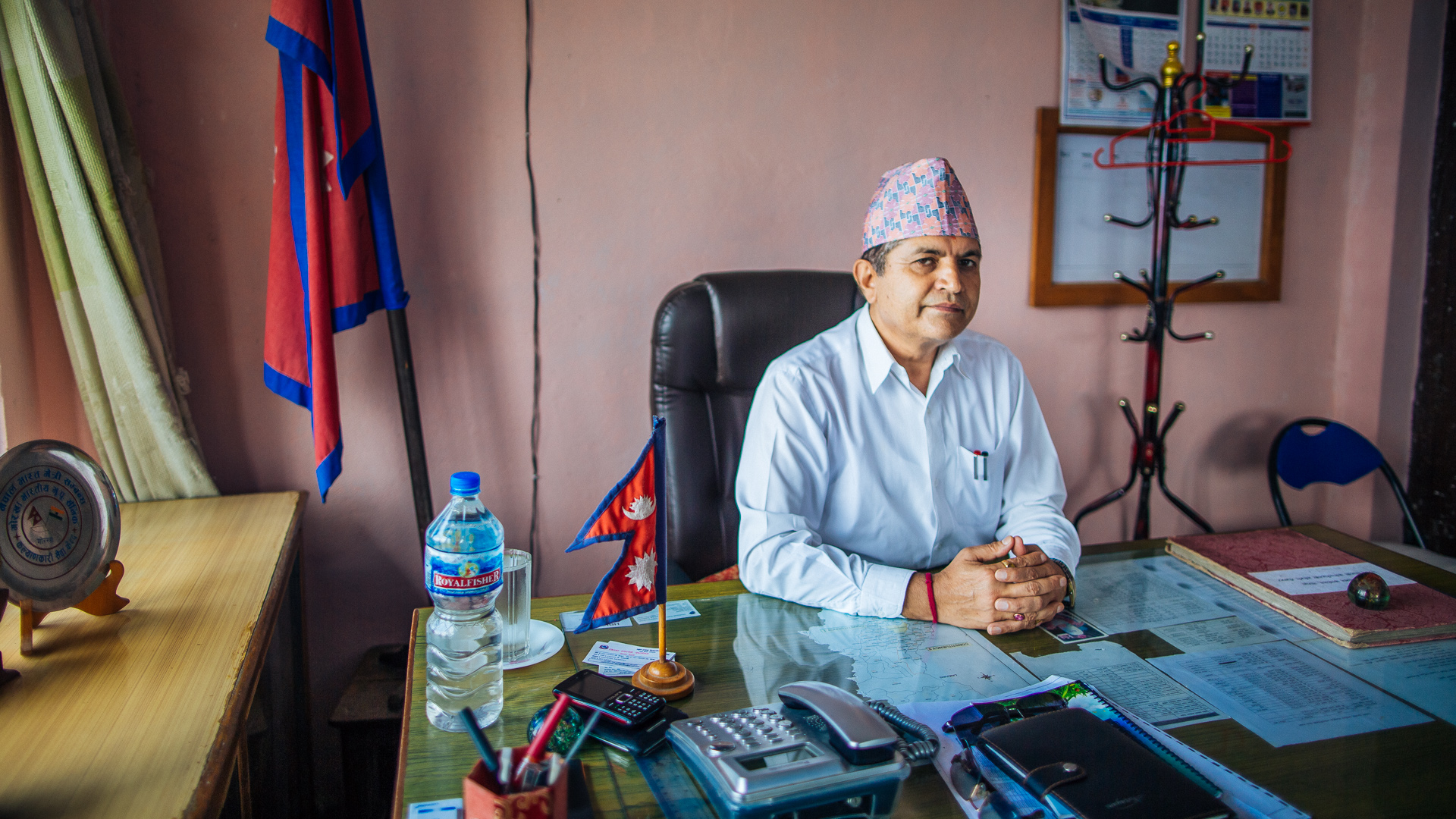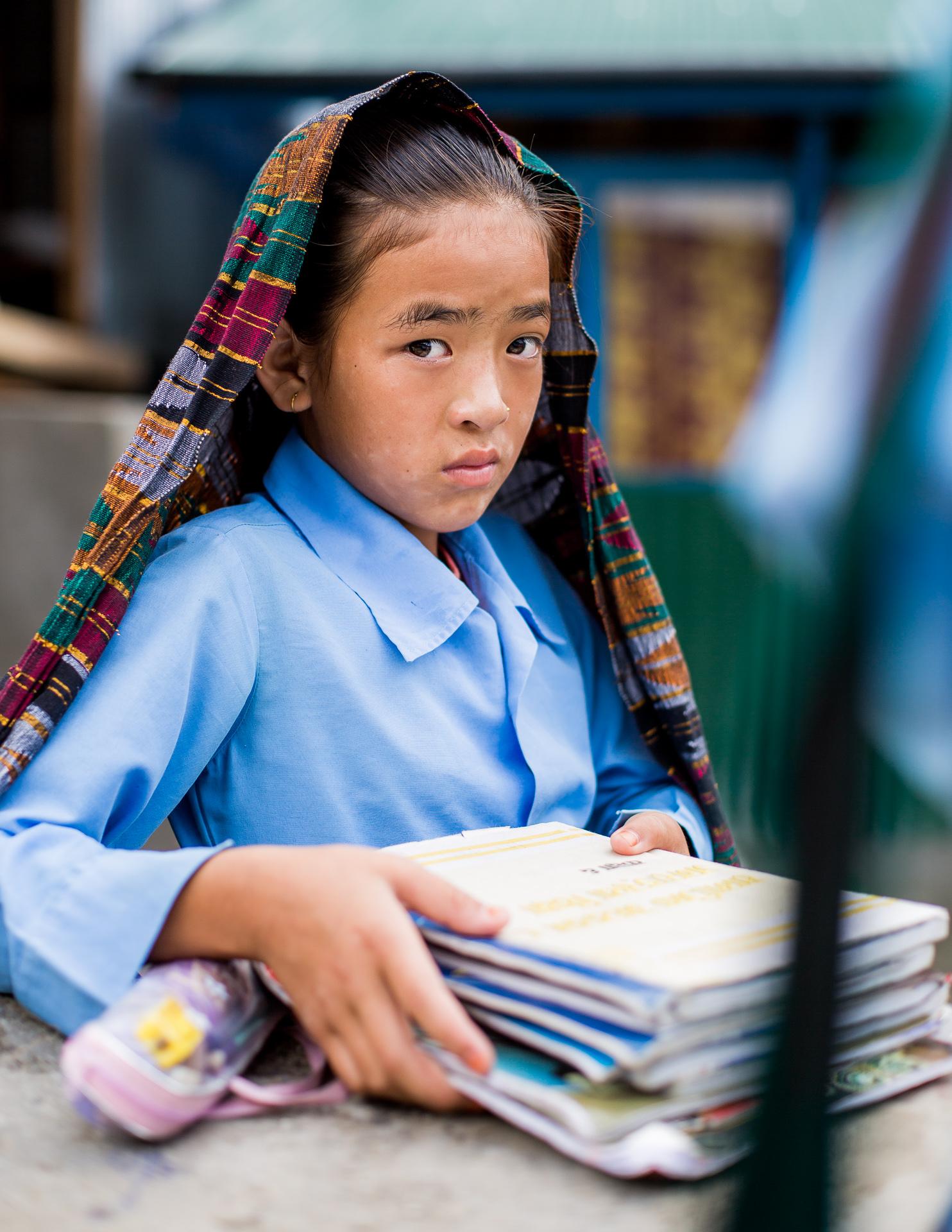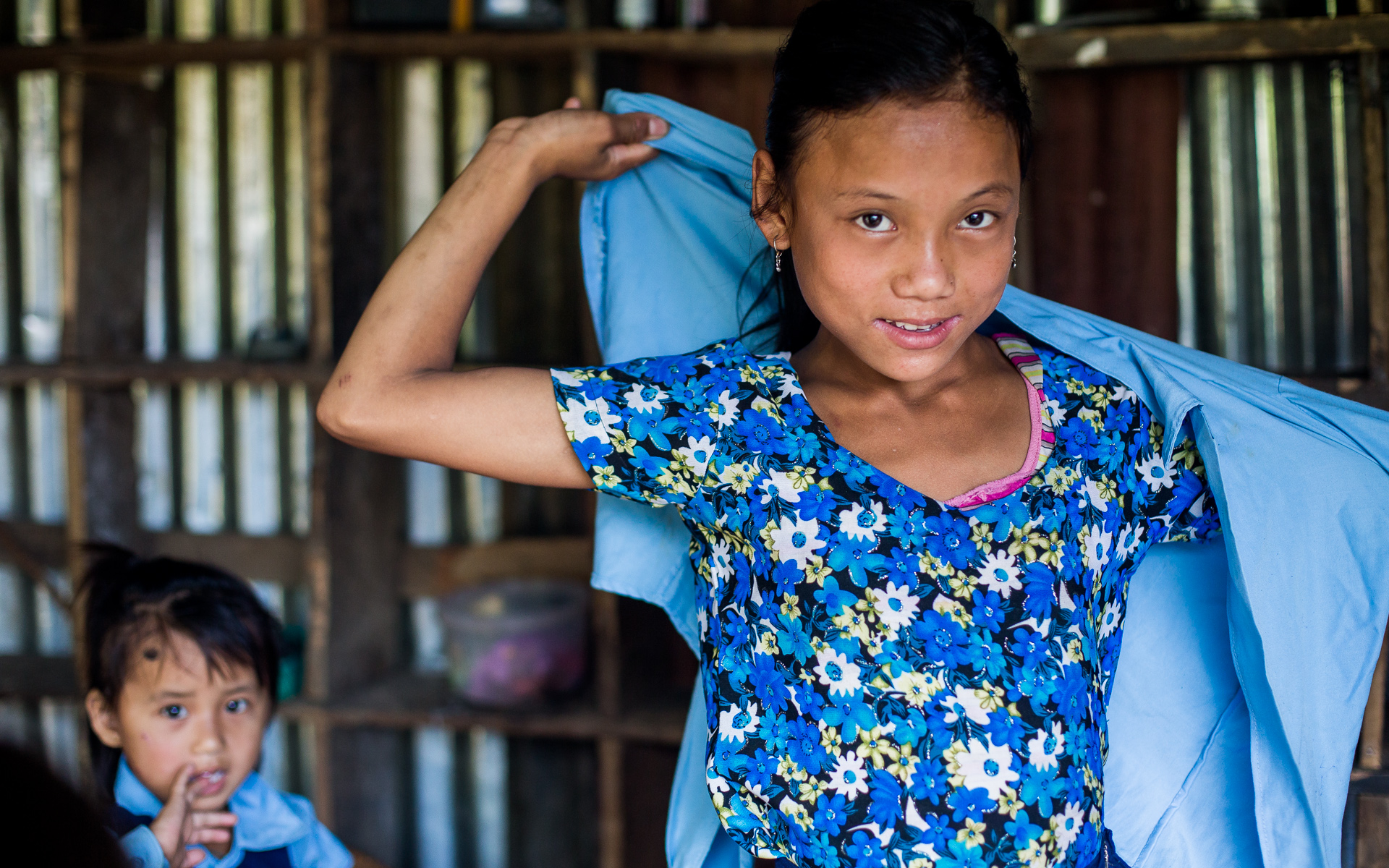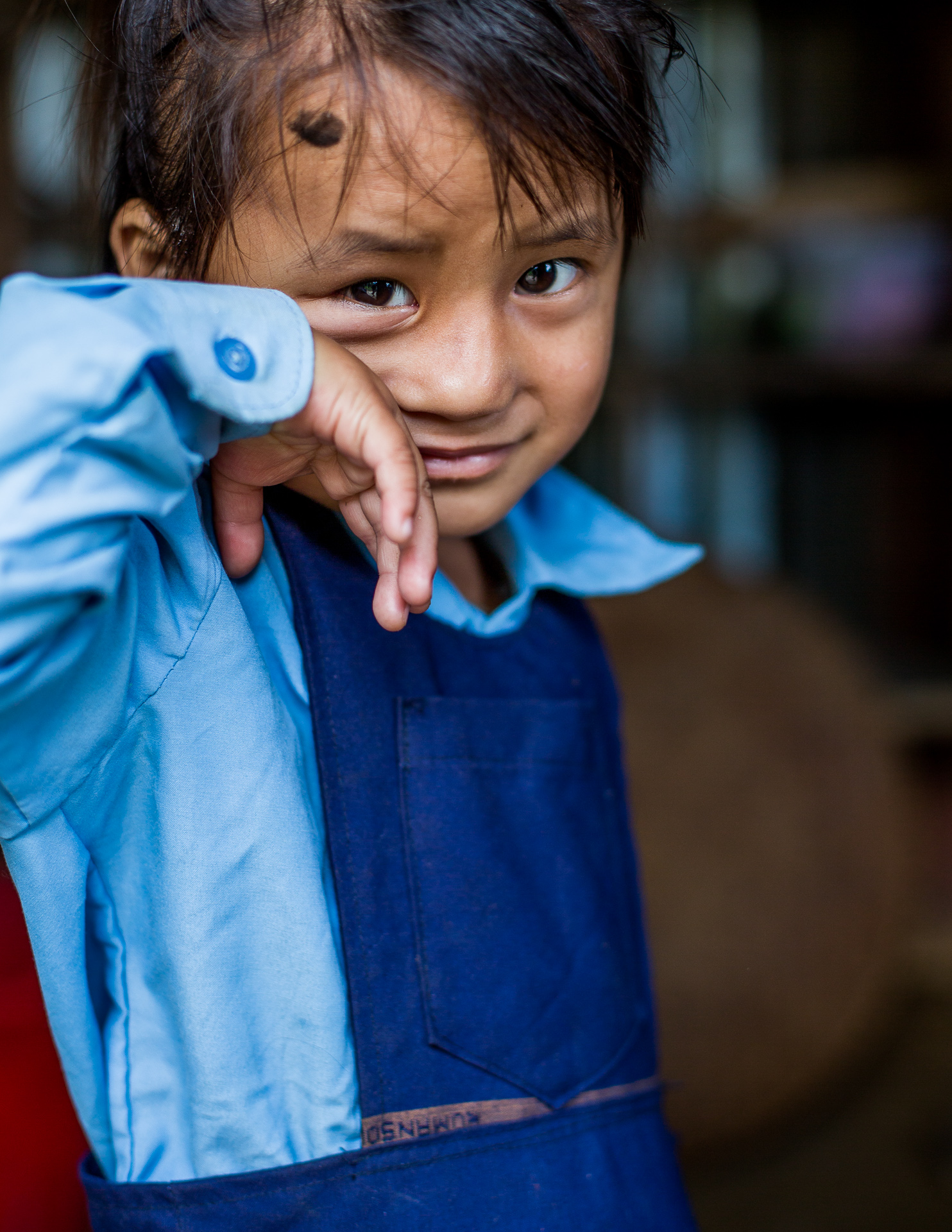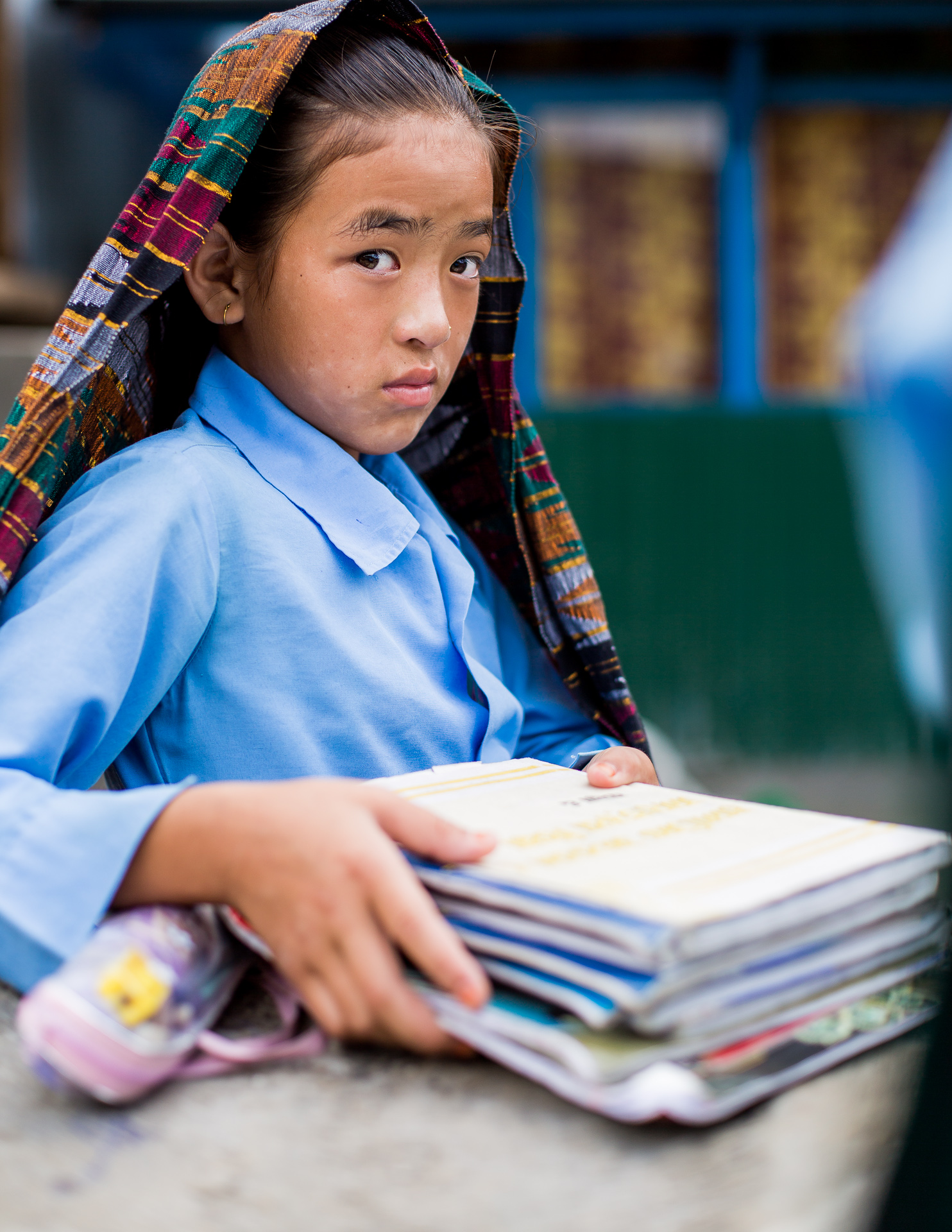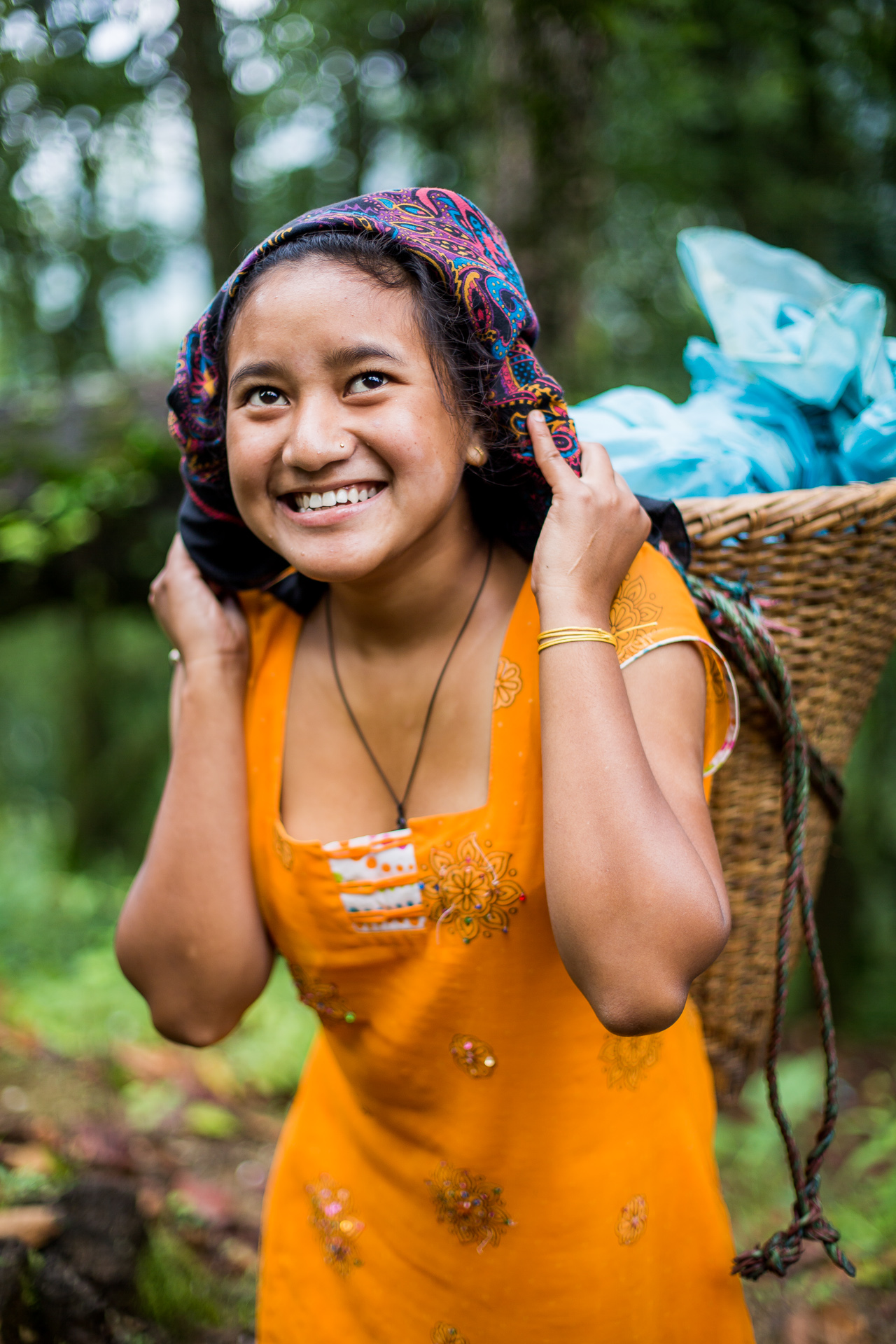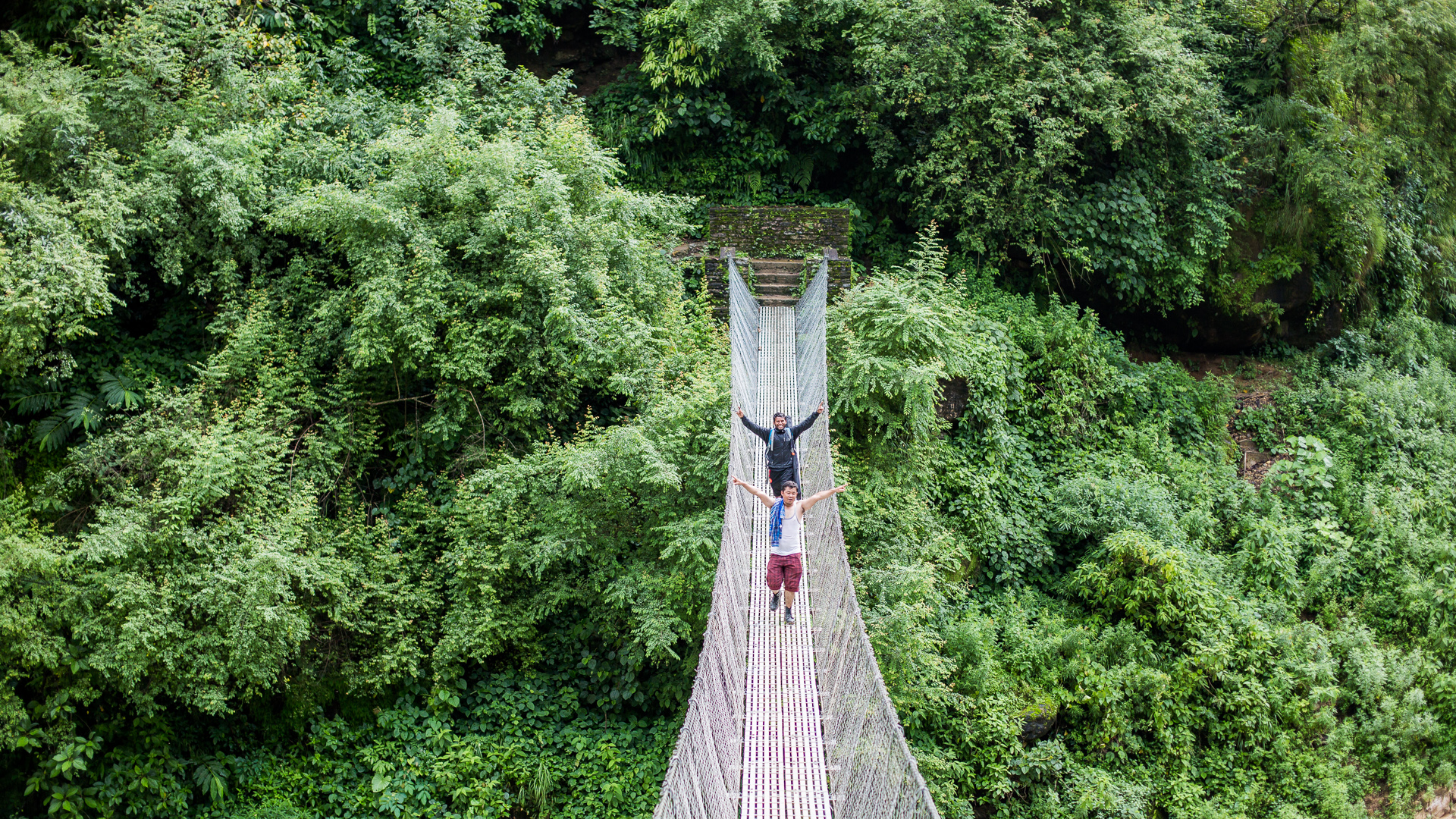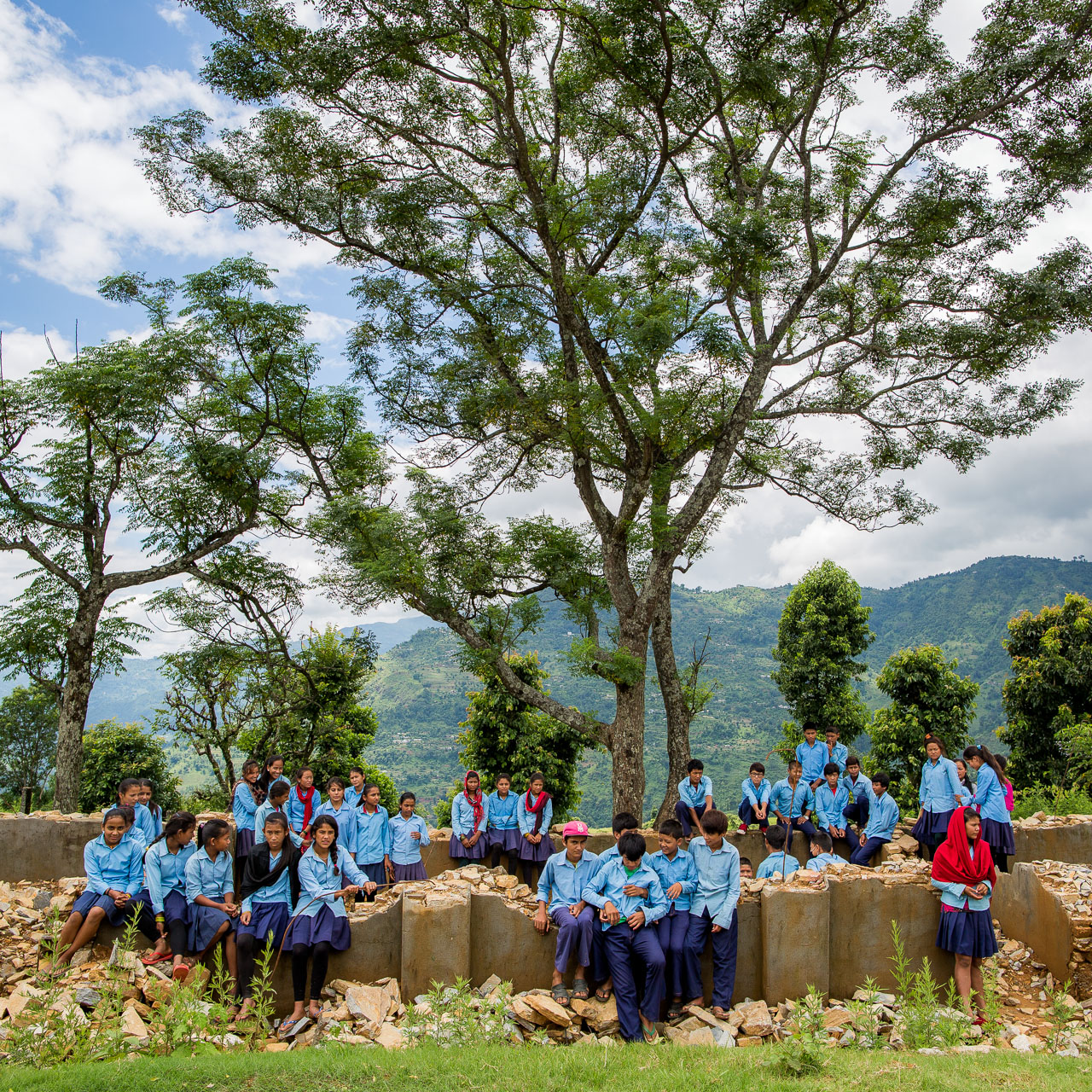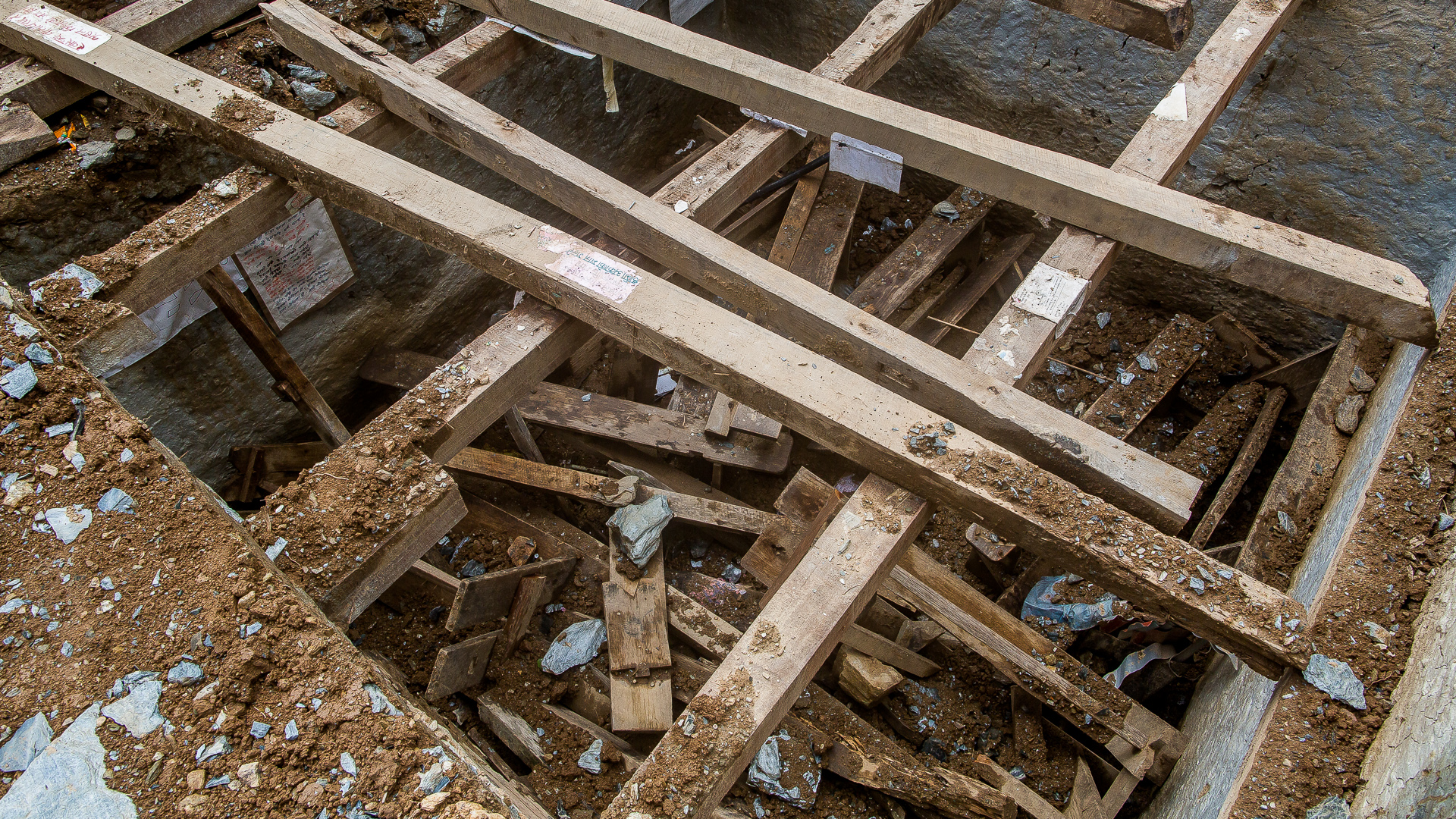Door: Danja Raven / danjaraven.nl
Grote ogen, verbaasde gezichten en flink wat gegiechel waren veelal de eerste reacties op de EHBO- en voorlichtingslessen over vrouwenkwalen die we gaven aan kinderen van 8 tot 16 jaar en aan vrouwen in het afgelegen bergdorp Gupsi Pakha, Laprak.
Gupsi Pakha (2700m) dat letterlijk ‘Nothing there’ betekent, ligt zo’n 500 meter boven Laprak (2200m). Gupsi is ontstaan als nooddorp omdat het lagergelegen Laprak onveilig werd verklaard na de aardbevingen in april en mei 2015. Desondanks wonen en werken veel mensen nog steeds in en rondom de ruïnes van hun voormalige huis in Laprak. En je kunt ze geen ongelijk geven; de leefomstandigheden in Laprak zijn ondanks de schade en de onveilige situatie een stuk minder erbarmelijk dan in Gupsi Pakha.
* Onverwachte sneeuwval tijdens ons verblijf in Gupsi Pakha, Laprak.
Vanwege deze onveilig situatie in Laprak zijn de scholen en de Healthpost wel naar Gupsi verhuisd. Dat betekent dat veel van de (jonge) kinderen die naar school gaan en dus boven wonen, volledig op zichzelf zijn aangewezen.
De afwezigheid van een moeder die helpt bij een bloedende knie omdat je tijdens het spelen een stukje van de berg afrolde, die weet wat te doen bij de flinke brandblaar die je opliep tijdens het koken op open vuur en die niet in paniek raakt bij aanblik van de hoofdwond die je kreeg door een van de scherpe randen van je tijdelijke golfplaten onderkomen, benadrukt de noodzaak van het geven van EHBO-lessen aan kinderen in dit gebied. Door beperkte hygiënische omstandigheden en de doorgaans gebrekkige kennis rondom hygiëne ligt infectie op de loer met mogelijk dramatische gevolgen door de afwezigheid van een ziekenhuis.
* Schone sneeuw van het dak afscheppen om de watervoorraad aan te vullen.
Wondverzorging, botbreuken en verstikking
Terug naar die grote ogen, verbaasde gezichten en het gegiechel. Nepalese mensen zijn erg verlegen dus zowel op school als in de Healthpost zorgde mijn opmerkelijke uiterlijk en onze EHBO-les over brandwonden, snijwonden, bloedingen, botbreuken, verstuikingen en verstikking voor flink wat geroezemoes en het verbergen van gezichten achter mutsen en sjaals. Desalniettemin werd er meestal met grote ogen, soms met open mond en in ieder geval met klapperende oren naar ons geluisterd.
Het voordoen van de Heimlich-greep, waarbij je schuin achter iemand staat terwijl je met de handen druk uitoefent in het gebied van de navel om zo eten dat vastzit in de luchtpijp naar buiten te drukken, zorgde uiteraard voor hilarische taferelen. De flyer met afbeeldingen van geïnfecteerde wonden dempte het geroezemoes en benadrukte onze boodschap over het belang van goede wondverzorging. De juiste antwoorden die we kregen op onze samenvattende vragen achteraf, bevestigde dat de kinderen van Laprak nu weten dat je brandwonden minstens tien minuten met lauw water dient te koelen en dat het spoelen van open wonden met (schoon) water echt de voorkeur heeft boven het gebruik van urine.
* EHBO-les aan één van de klassen in de tijdelijke school in Gupsi Pakha, Laprak
Overlopende Healthpost
Voor verdere wondverzorging na het verlenen of krijgen van EHBO, kunnen inwoners terecht in de Healthpost. Dat wil zeggen: een golfplaten gebouw waar de overheid één healthmedewerker uit Kathmandu naartoe stuurde. Deze dame in kwestie - die overigens geweldig werk verricht en heel goed weet waar ze mee bezig is - heeft het echt veel te druk. Ze werkt zeven dagen per week en kampt ook nog met het verlies van haar man die tijdens de aardbevingen omkwam door lawines in de bergen. Ze heeft bovendien te weinig tijd om de Healthpost goed te organiseren; een groot deel van de medicijnen zit daarom in een doos waar af en toe in gegrabbeld wordt en het is onduidelijk welke medicatie er op voorraad zijn.
Tijd voor het geven van verdere voorlichting heeft ze überhaupt niet en ook op scholen wordt hier verder geen aandacht aan besteed. Dat terwijl ongelukken niet alleen in en om het huis gebeuren maar bijvoorbeeld ook op de akkers. De Healthpost is dan op uren loopafstand. Ook hevige sneeuwval maakt de Healthpost soms moeilijk of niet bereikbaar. Weten hoe je hevige bloedingen stopt of vermindert en hoe je de wond verzorgt (met beperkte middelen) is daarom essentiële informatie voor zowel kinderen als volwassenen en mogelijk levensreddend. Je begrijpt dat Micro-Care Nepal dan ook met open armen werden ontvangen om voorlichting te geven middels EHBO-lessen en om te helpen met wat hand- en spandiensten in en rondom de Healthpost. Daarnaast doneerden we EHBO-materiaal, zoals (druk)verbanden, pleisters, tape, antibioticakuren en betadine.
Seksuele voorlichting op je dertigste
Na een paar dagen lesgeven op de scholen was het tijd voor onze tweede missie, het voorlichten van vrouwen over typische vrouwenkwalen. Hoewel ik in mijn dagelijkse leven als gezondheidsredacteur nooit uitgepraat ben over zaken als vaginale klachten en vleesbomen, behoeft dit - voor de meeste mensen toch wat schaamtegevoelige onderwerp - een iets genuanceerdere introductie in het verlegen Nepal. Om te voorkomen dat we de vrouwen al op voorhand zouden afschrikken, hebben we deze vrouwenles achter de EHBO-les geplakt zonder dit vooraf te communiceren. Door de enkele aanwezige mannen de deur te wijzen na de uitleg over EHBO en vooral niet met de vrouwen mee te giechelen (alhoewel dit soms erg lastig was), lukte het mij en mijn collega Samjhana (de vriendin van oprichter van de stichting, Pim Horvers) om serieus met deze vrouwen in gesprek te gaan over onderwerpen, zoals menstruatie, zwangerschap, hevig bloedverlies, bekkenbodemverzakking en het vrouwenlichaam, met name de werking en functie van baarmoeder en eierstokken. Na onze eerste les werd hierover uiteraard flink geroddeld in het lagergelegen Laprak, maar dit weerhield een tweede groep vrouwen er niet van om de volgende dag in de vroege ochtend twee uur naar boven te wandelen om aanwezig te zijn bij een soortgelijke les.
‘Bad blood’
Op mijn vraag of de dames enig idee hadden waarom ze menstrueerden, kreeg ik een opmerkelijk antwoord: vrouwen menstrueren omdat ze slecht bloed ‘bad blood’ hebben. Ik vermoed dat deze gedachte ontstaan is door het afwijkende uiterlijk van menstruatiebloed in vergelijking met ‘normaal’ bloed. Voor de mannen onder ons: menstruatiebloed is donkerrood tot heel donkerbruin en soms klonterig. ’Bad blood’ is ook de reden dat veel Nepalese vrouwen tijdens hun menstruatie niet in bed of zelfs in het huis mogen slapen van hun man. Uiteraard was het onmogelijk om deze ‘volkswijsheid’ in een uurtje volledig de kop in te drukken. Toch lukte het door met plaatjes van de baarmoeder en eierstokken en uitleg over de menstruatiecyclus - dat het vrouwenlichaam zichzelf iedere maand klaarmaakt voor een zwangerschap bijvoorbeeld en zonder bevruchting dit weefsel ook weer afscheidt - wel om bij deze vrouwen meer bewondering en respect te creëren voor hun lichaam.
* Voor het bijgebouw van de Healthpost na onze vrouwenles.
Even niet zwanger
Kennis over de menstruatiecyclus nodigt uiteraard ook uit om te praten over preventie. In Nederland zou ik overigens iedereen afraden om conform mijn uitleg een zwangerschap proberen te voorkomen, maar hier probeerde ik duidelijk te maken dat alleen seks hebben vlak na de menstruatie de kans op een zwangerschap echt een stuk verkleint. Onder luid gelach en een blik die mij duidelijk maakte dat ik iets heel raars gezegd had, verduidelijkte deze vrouwen mij dat hun man die zich soms dronken aan hen opdrong hier echt geen boodschap aan heeft. Aanvullend had ik dan ook graag een lezing gegeven over gelijke rechten voor mannen en vrouwen, baas in eigen buik en het goed gebruiken van lange nagels bij opdringerige kerels, maar deze preek gaf ik weinig kans van slagen dus liet ik hem maar achterwege.
Missie geslaagd
Uit de persoonlijke vragen achteraf, veelal over vervelende maar doorgaans relatief onschuldige kwalen, bleek dat het ons - ondanks mijn goedbedoelde maar niet succesvolle poging tot uitleg over preventie - gelukt was om wel degelijk een gedeelte van de schaamte bij deze vrouwen weg te nemen. Bovendien konden we een flink aantal vrouwen die zich soms ernstig zorgen maakten over zaken als hevig bloedverlies en onprettige geurtjes met onze antwoorden geruststellen of adviseren stappen te ondernemen.
Na enige aanmoediging van onze kant om vooral met de buurvrouw, vriendinnen en dochters over deze onderwerpen te praten was er dan ook geen andere conclusie mogelijk…
Missie geslaagd!
